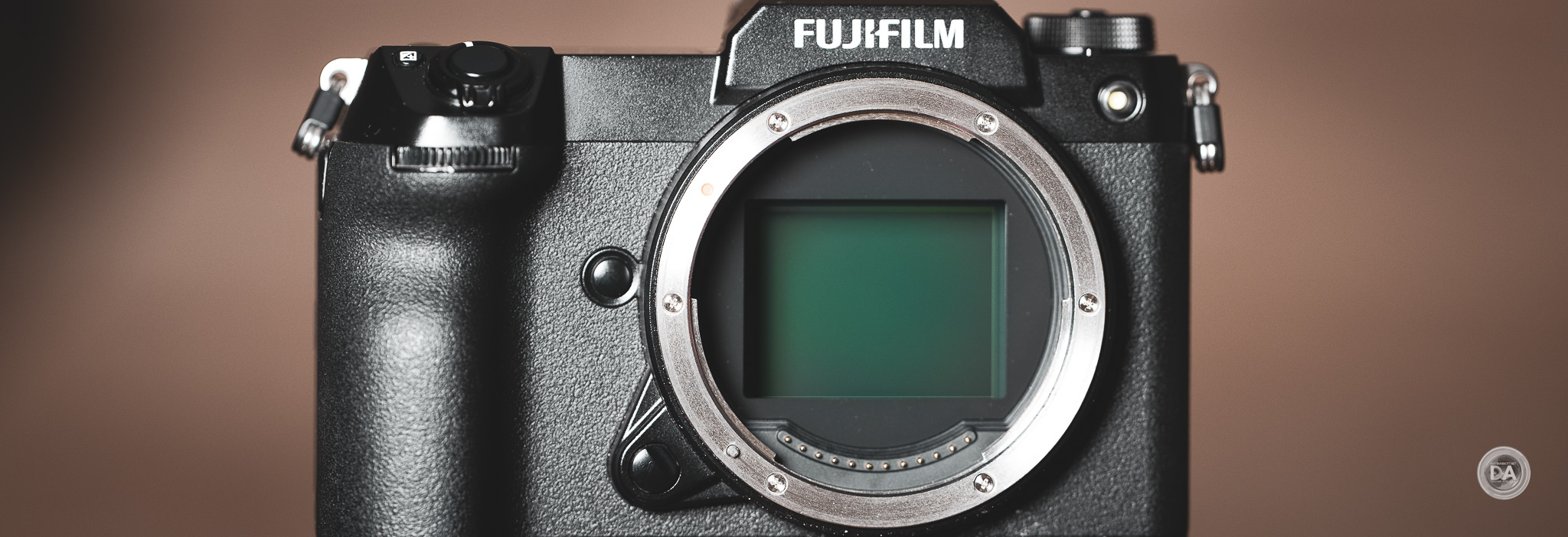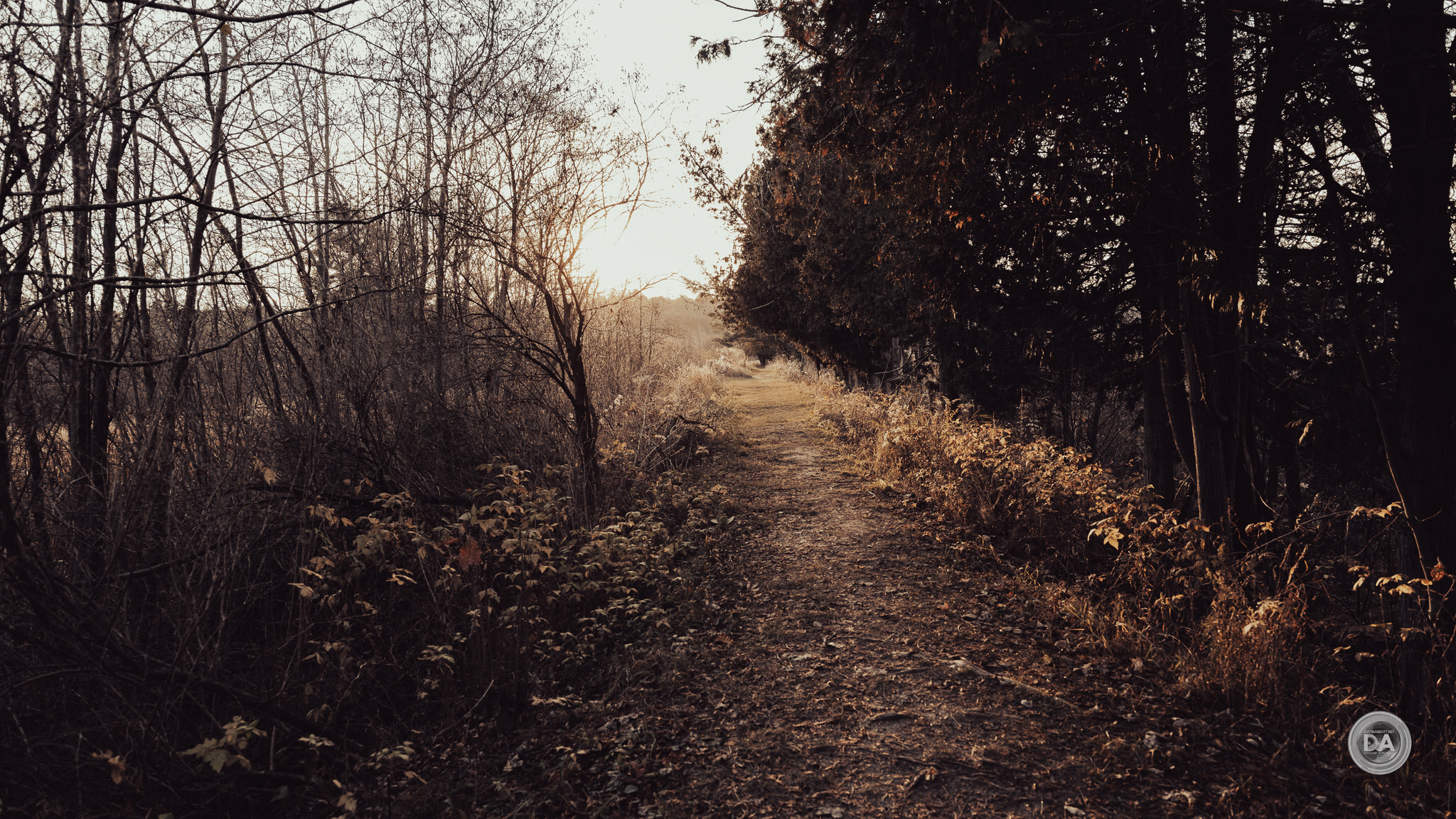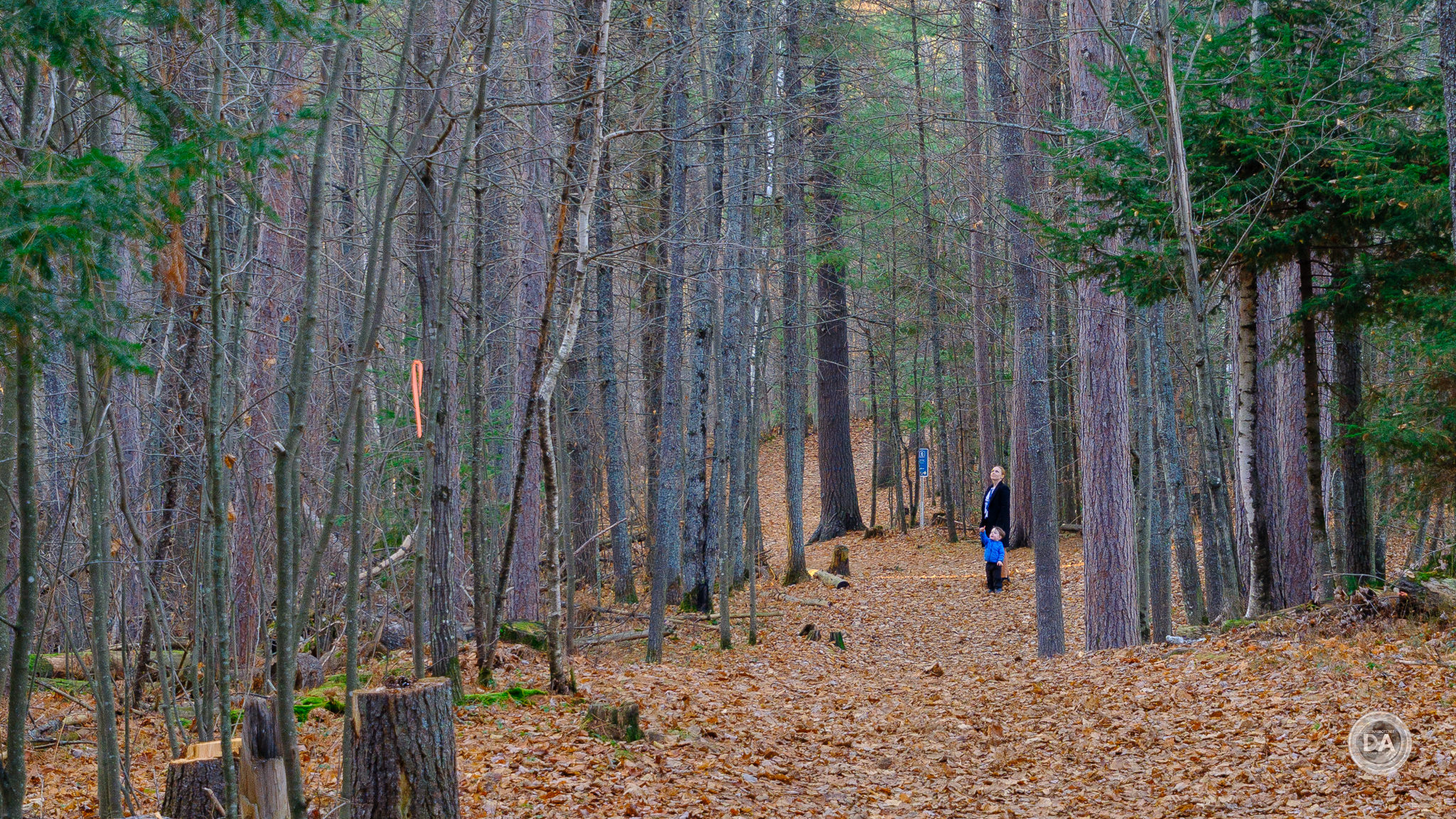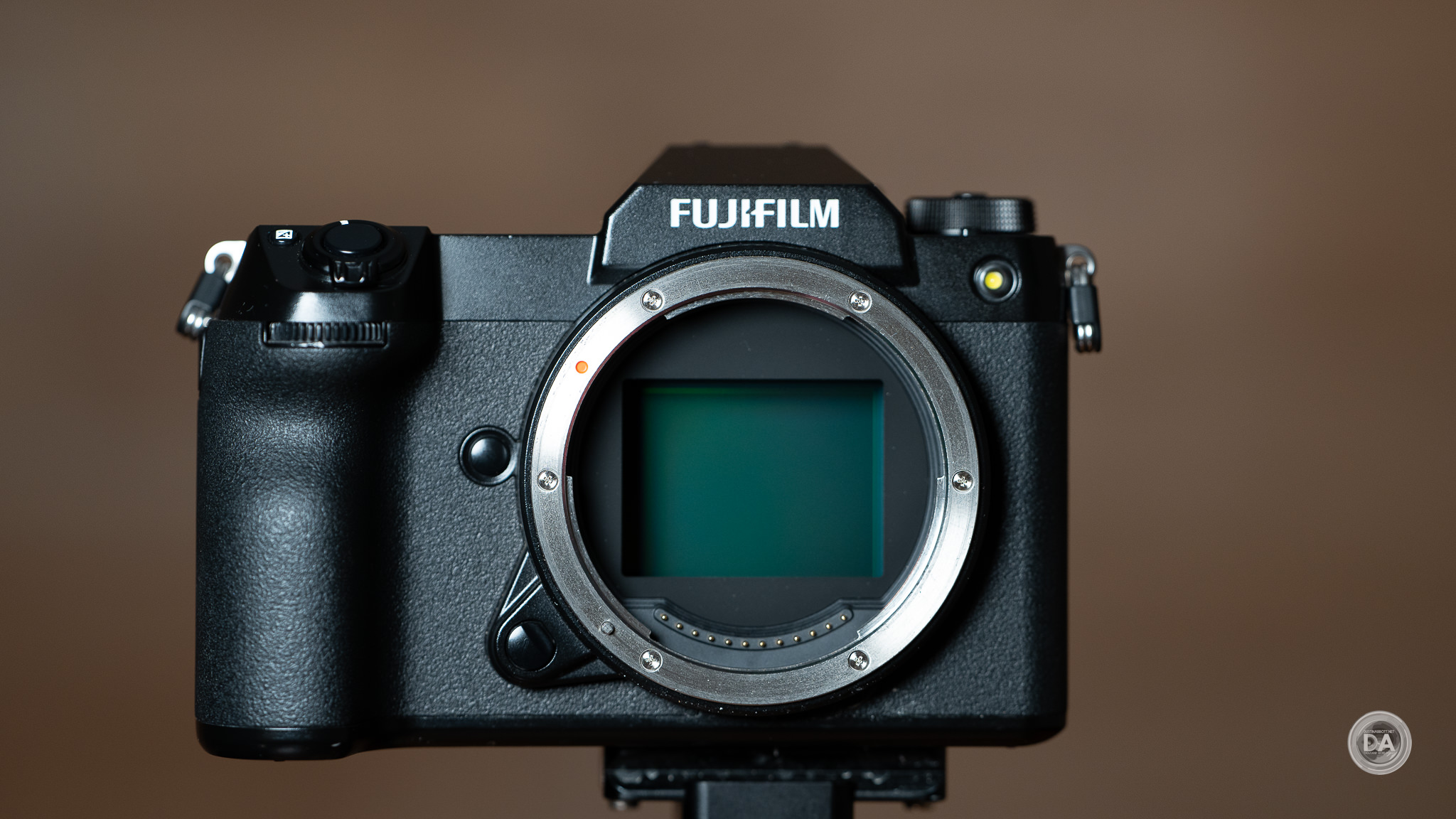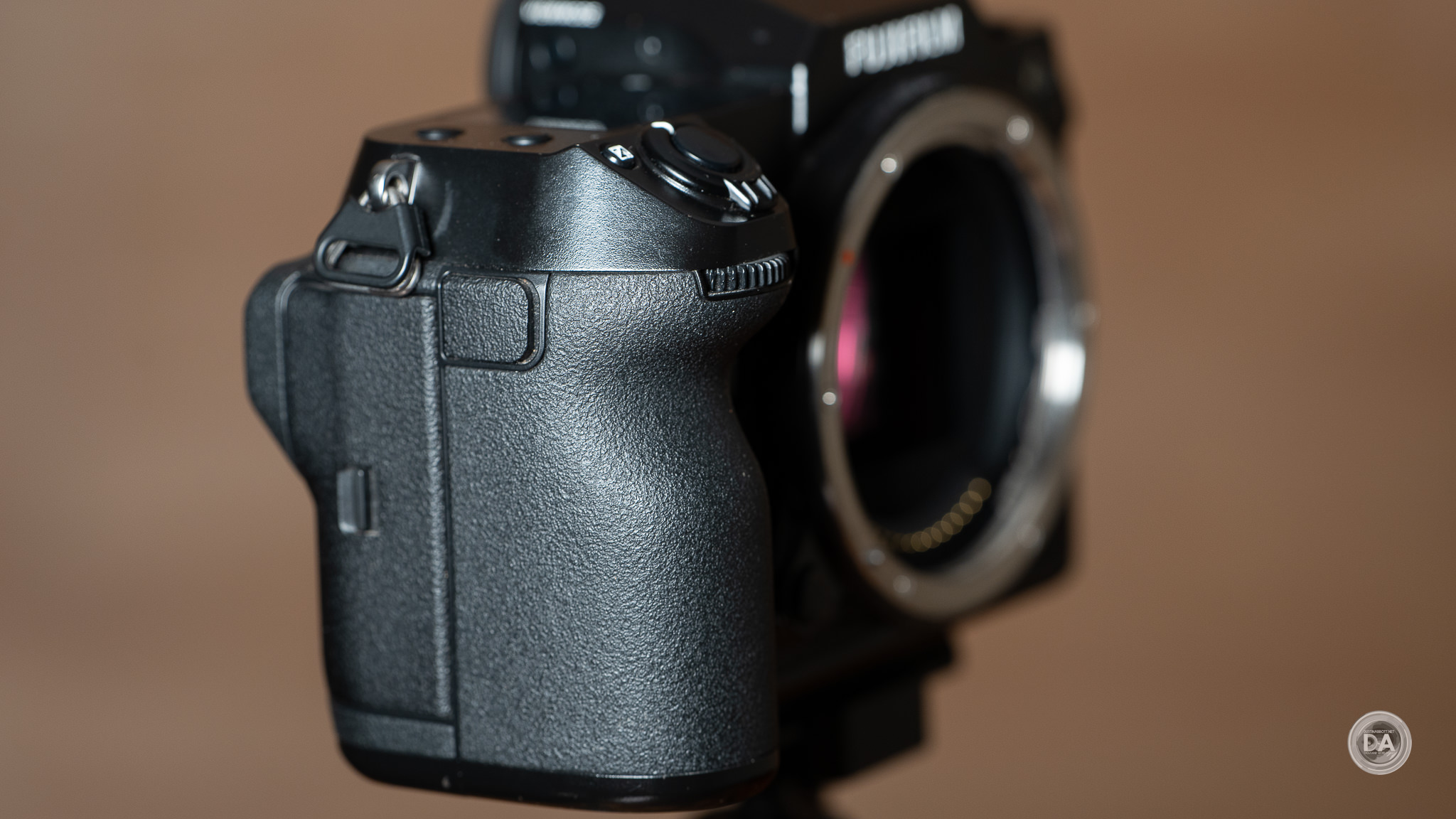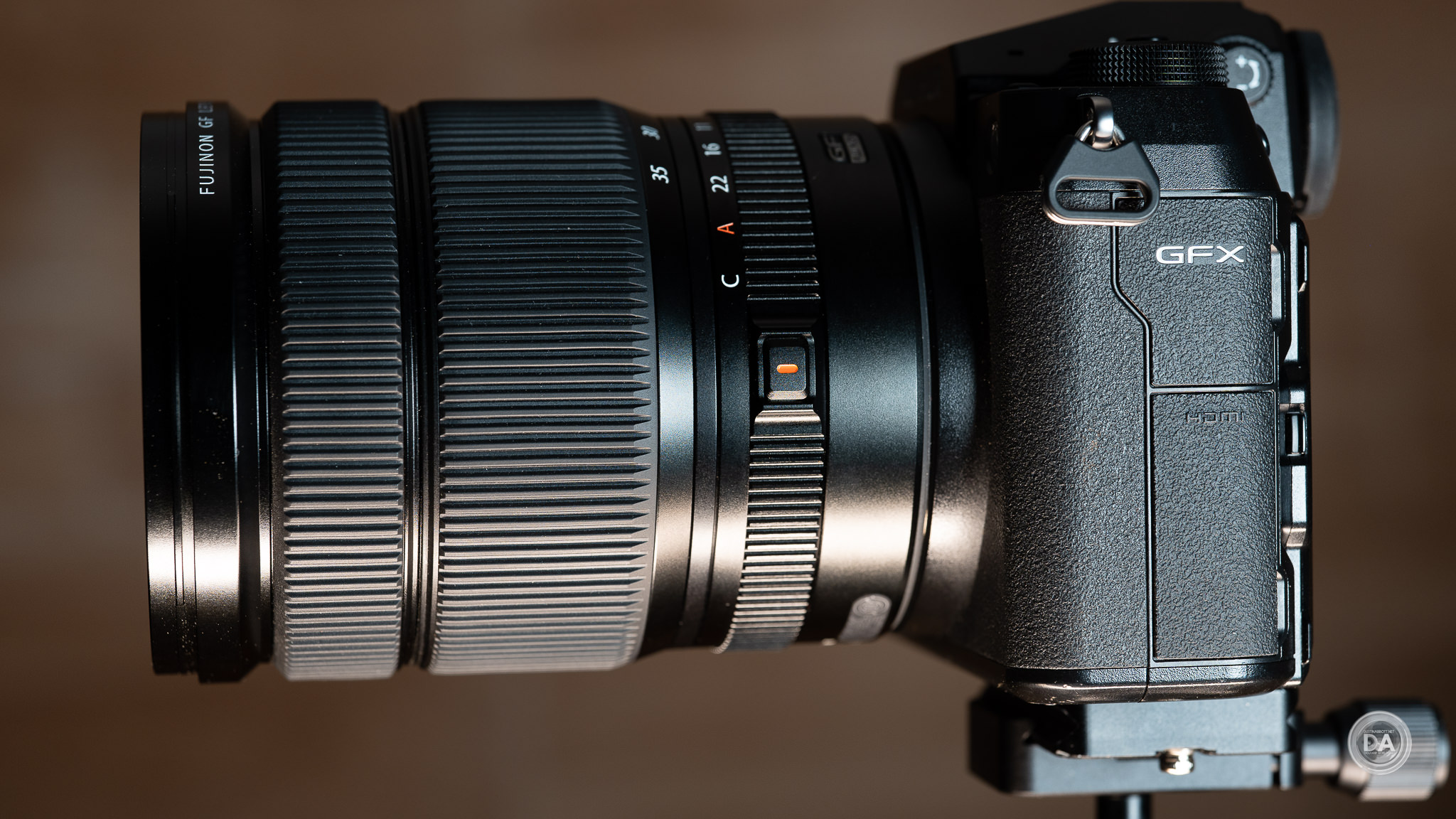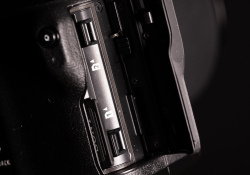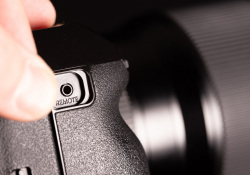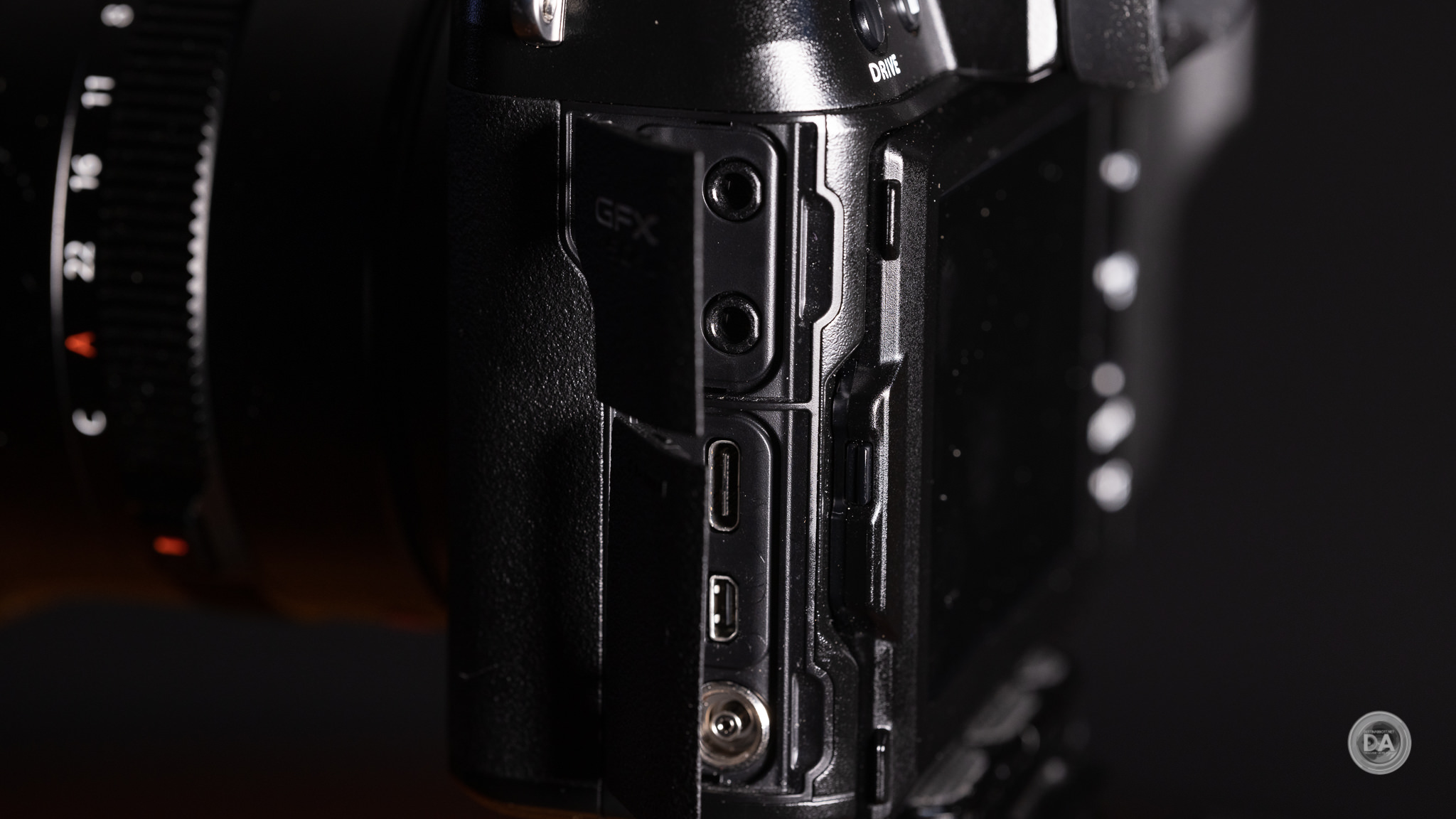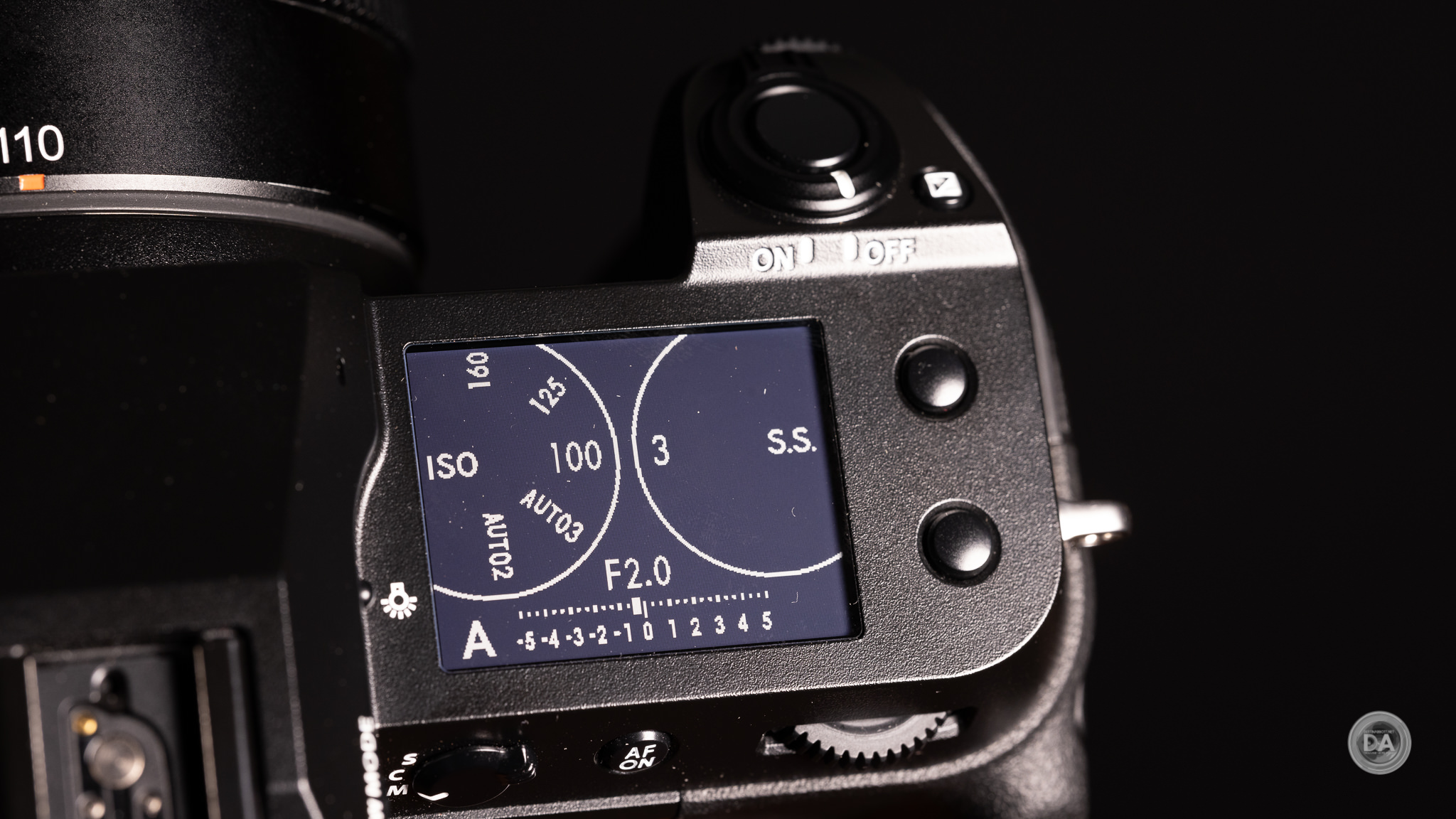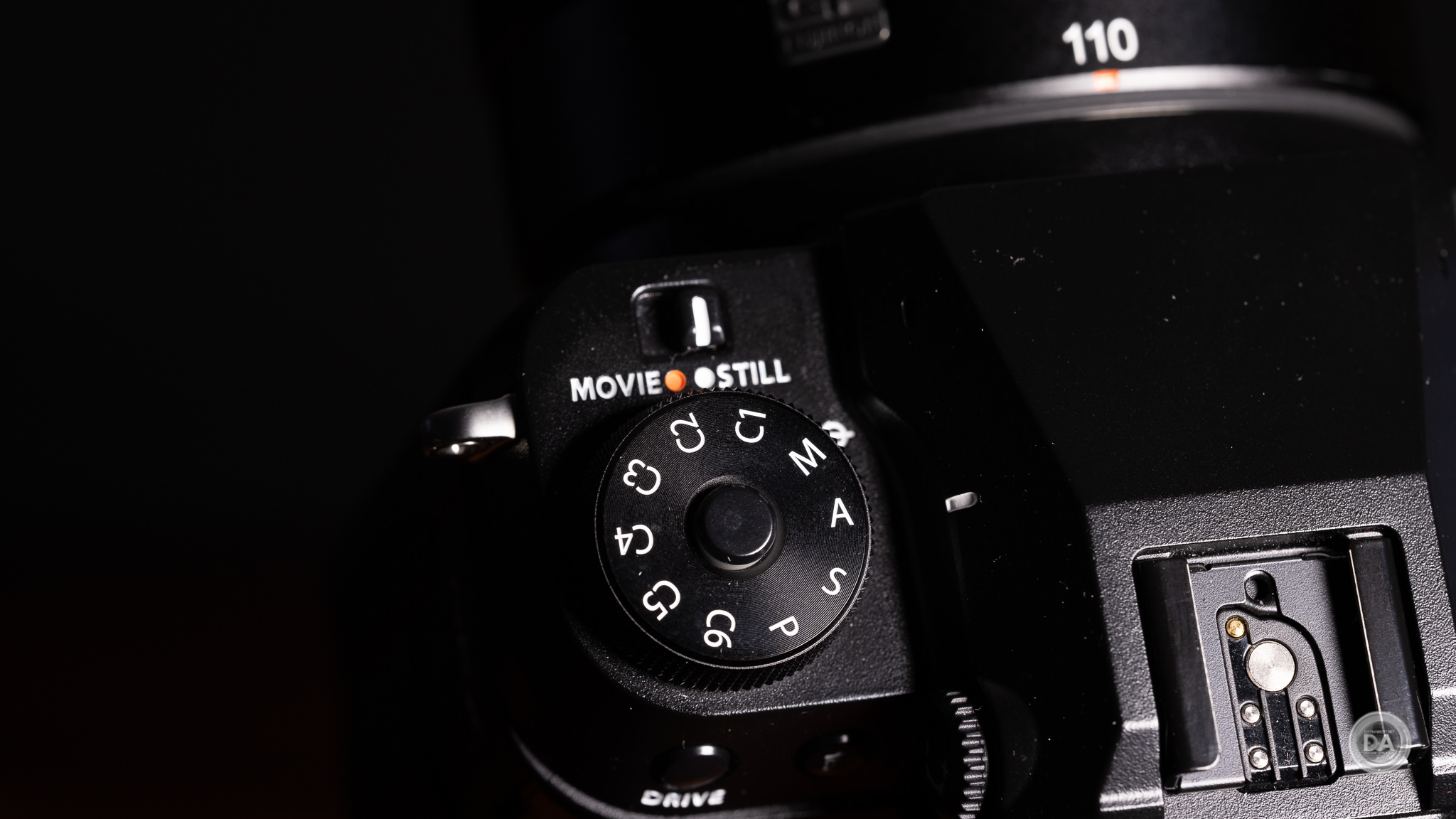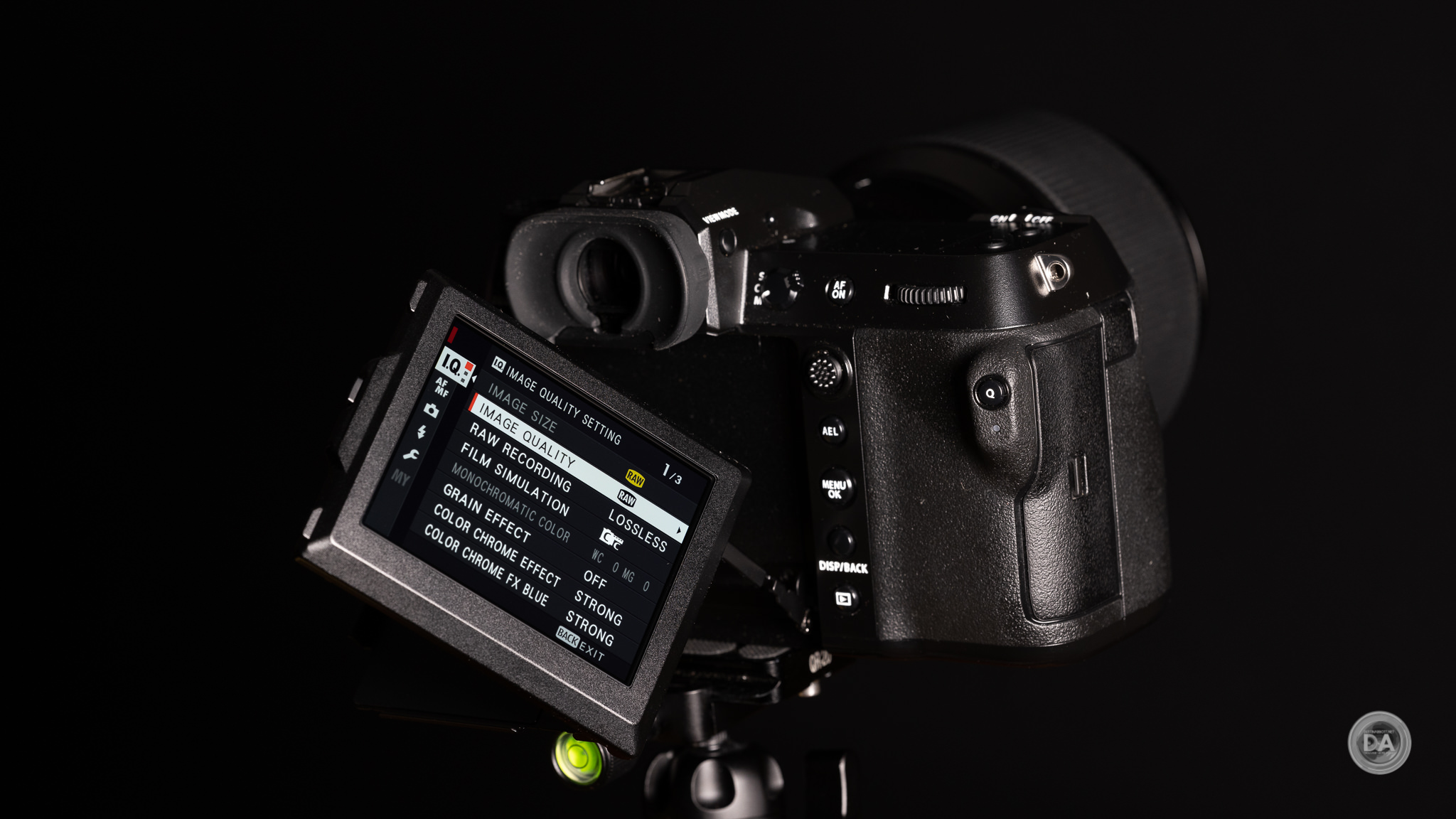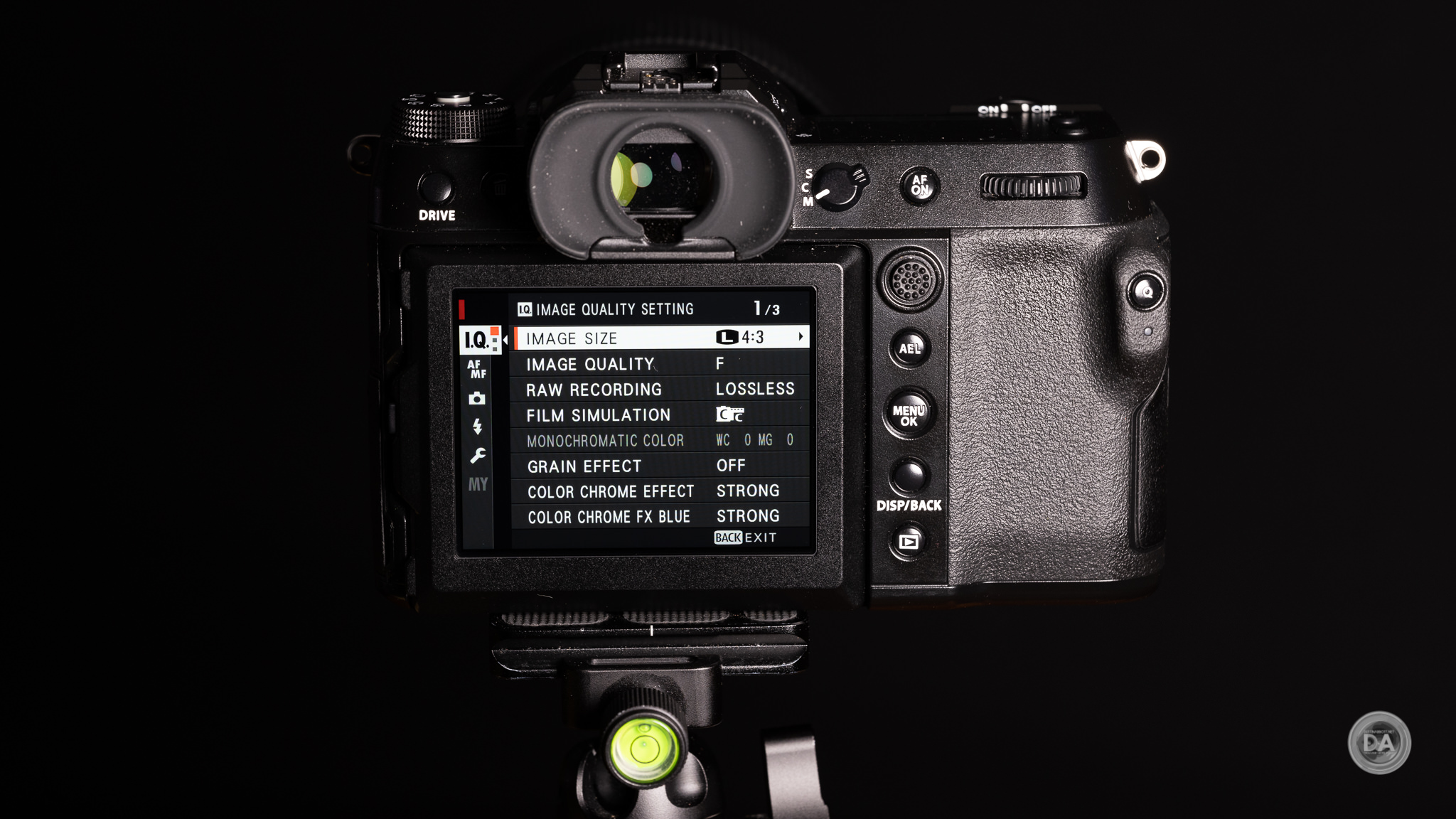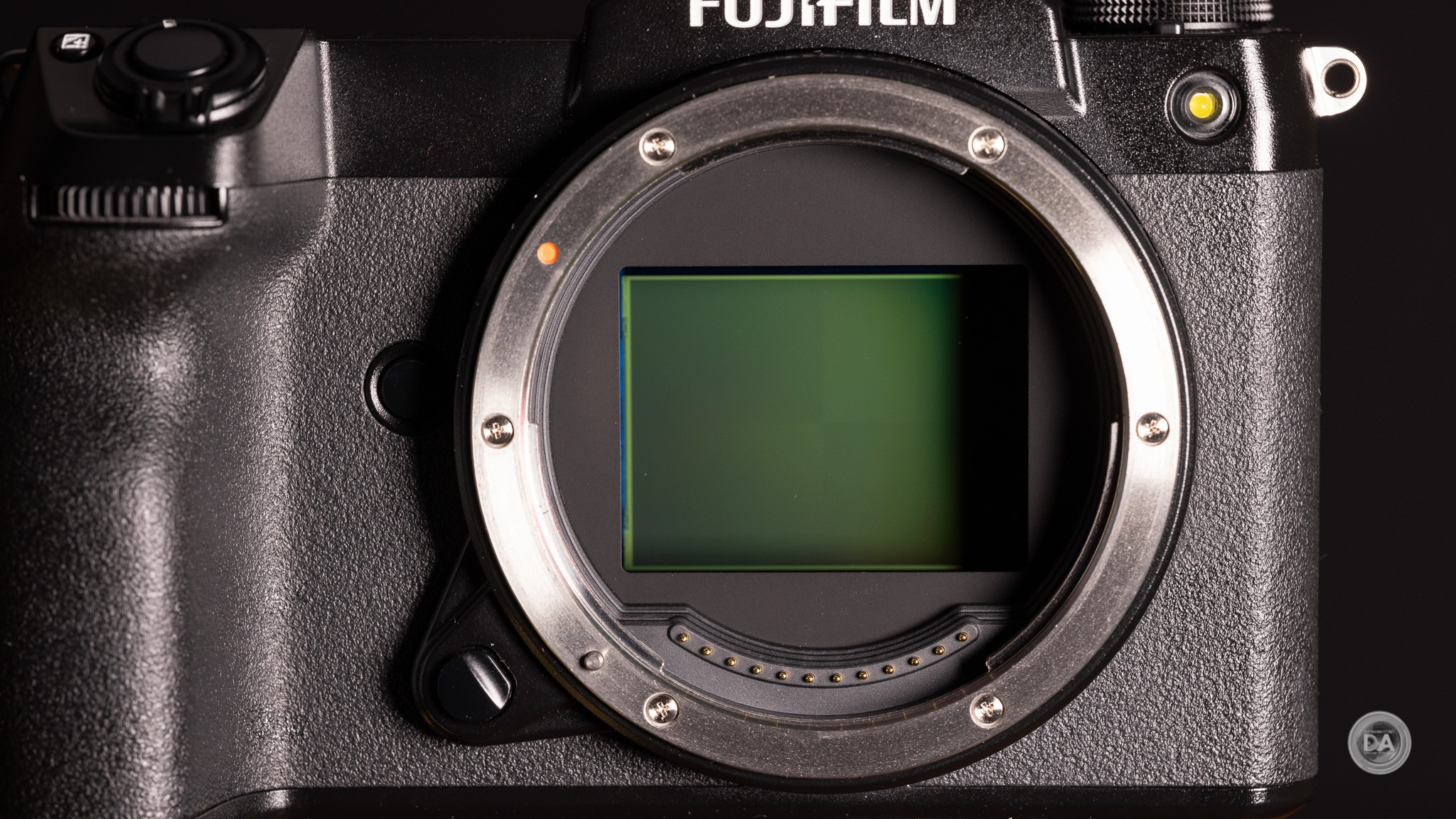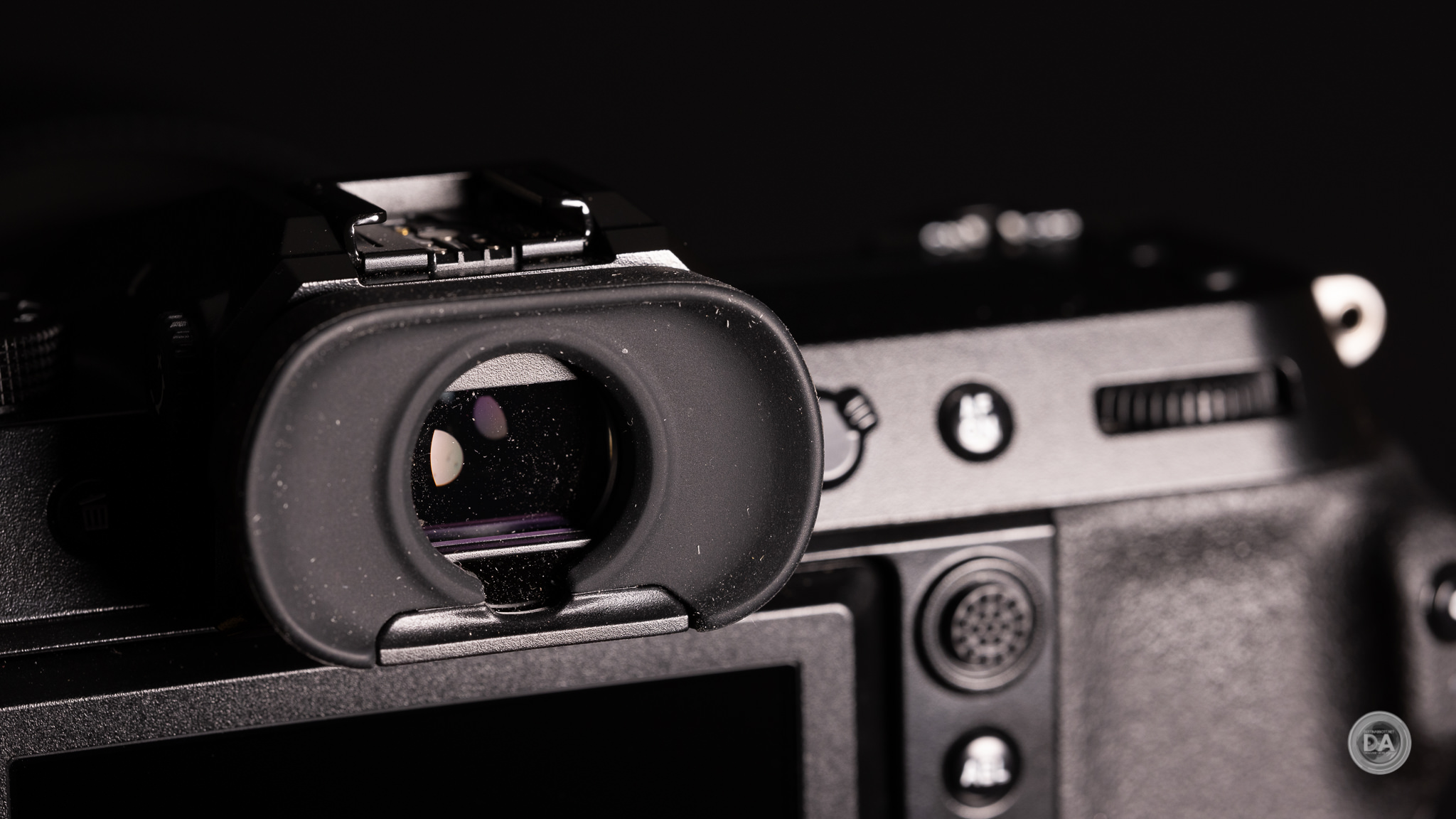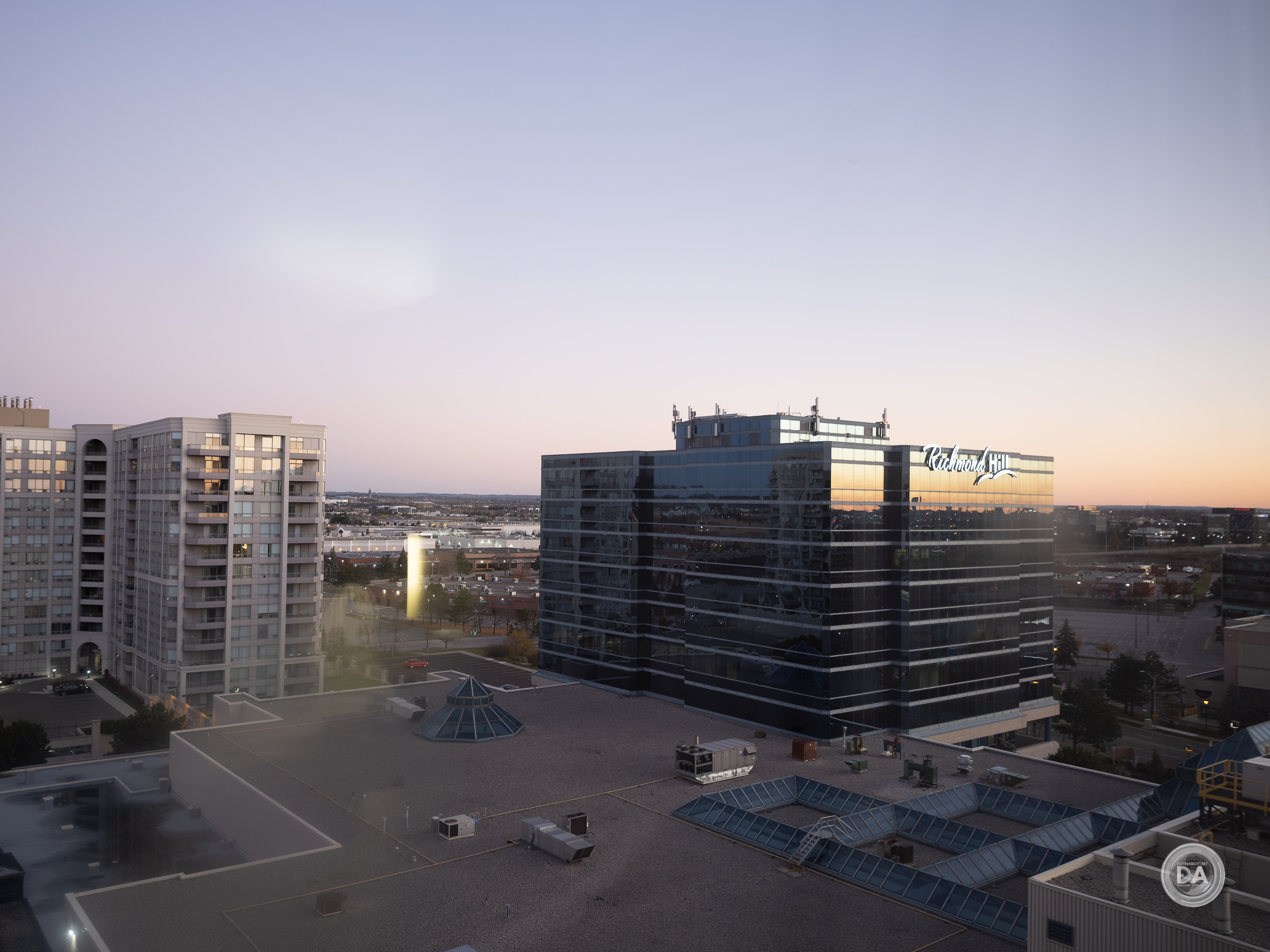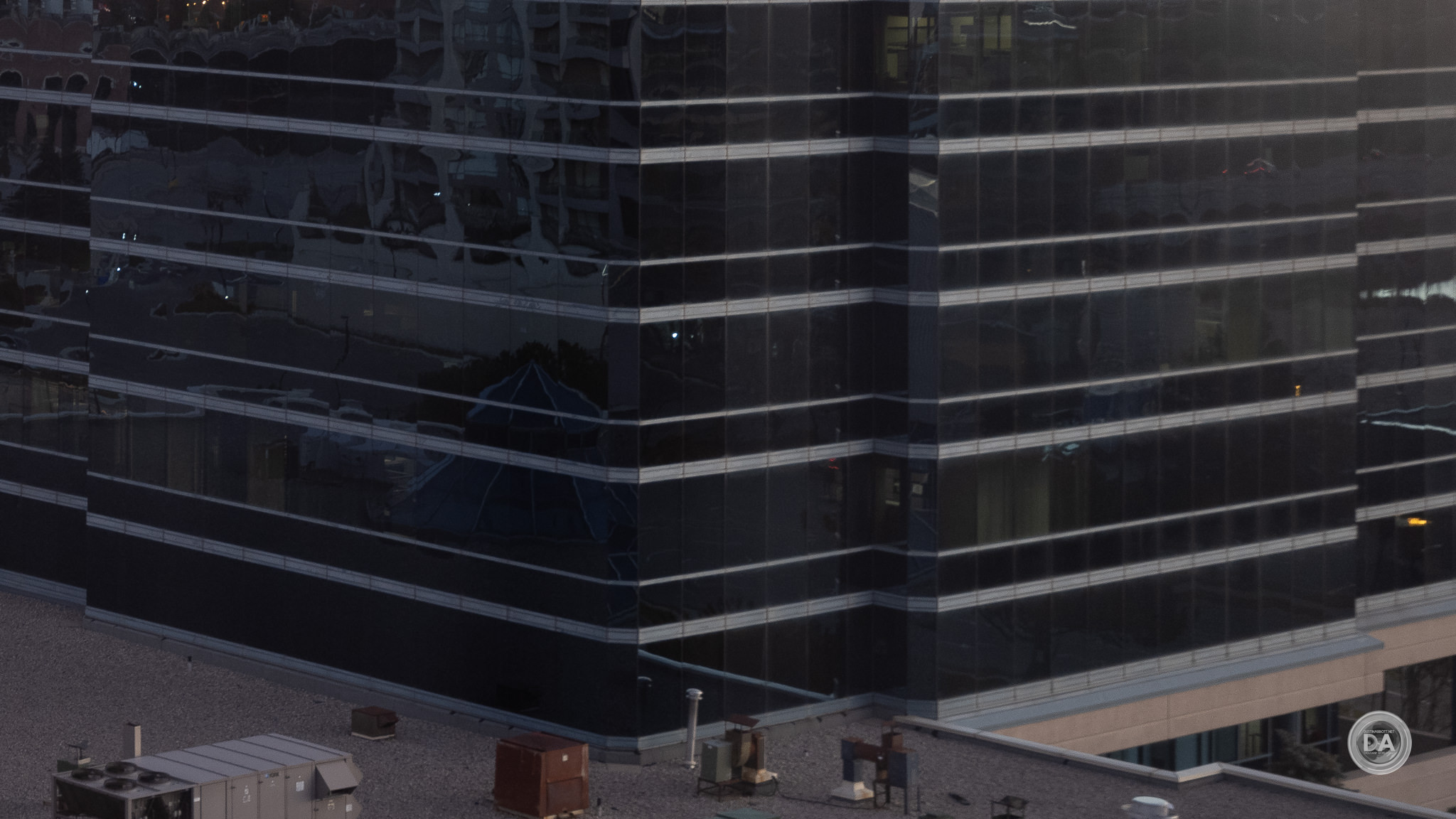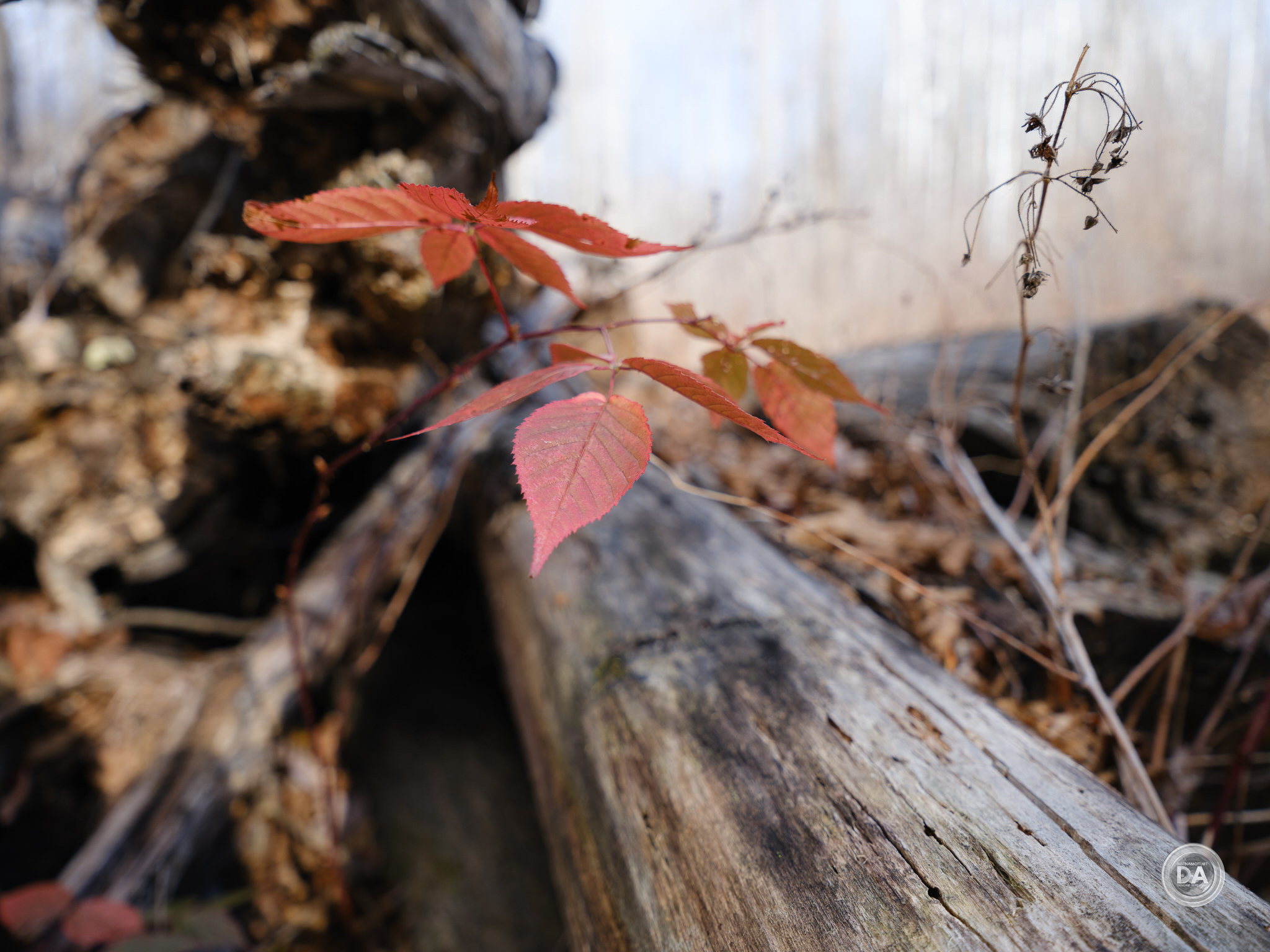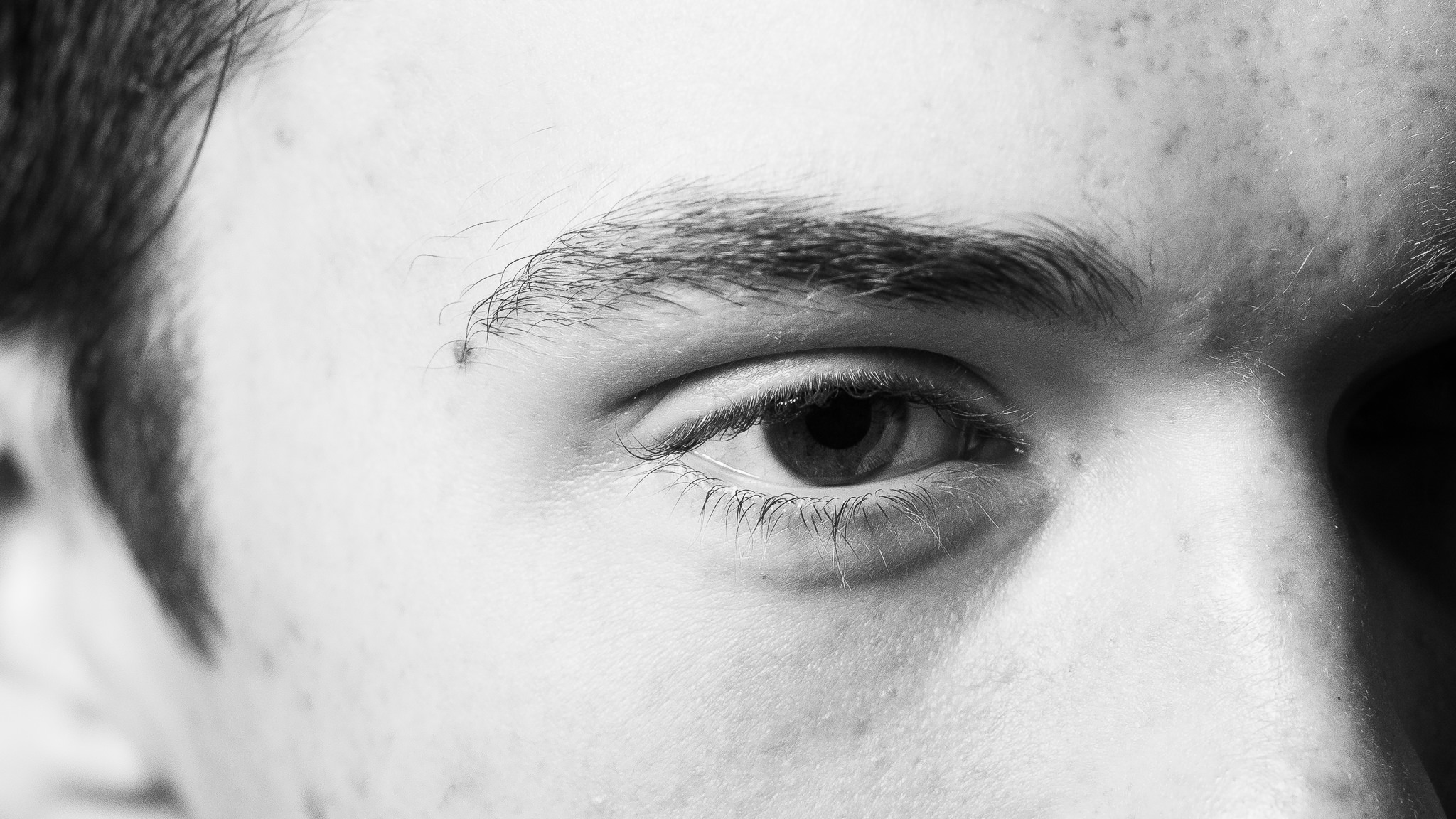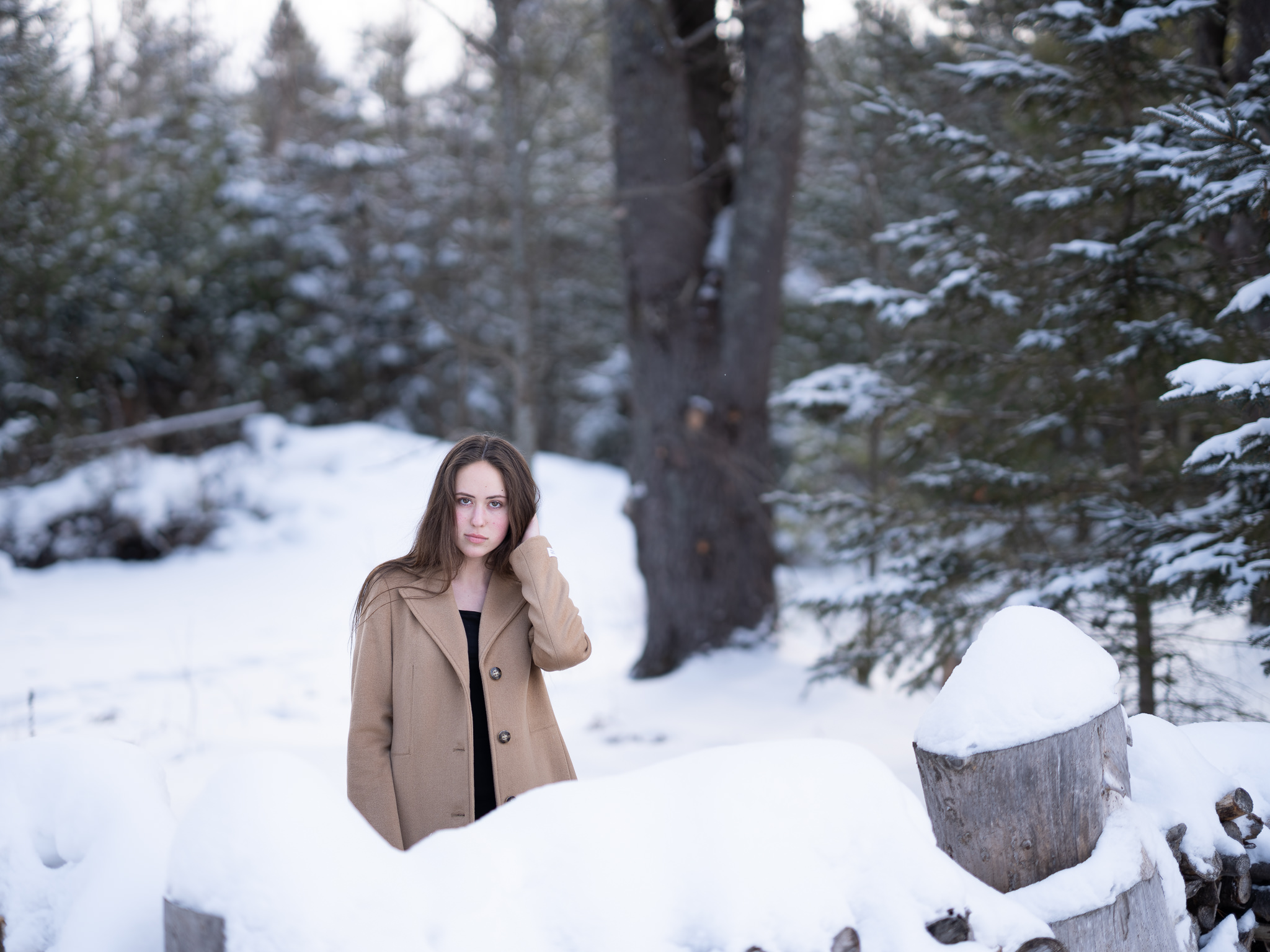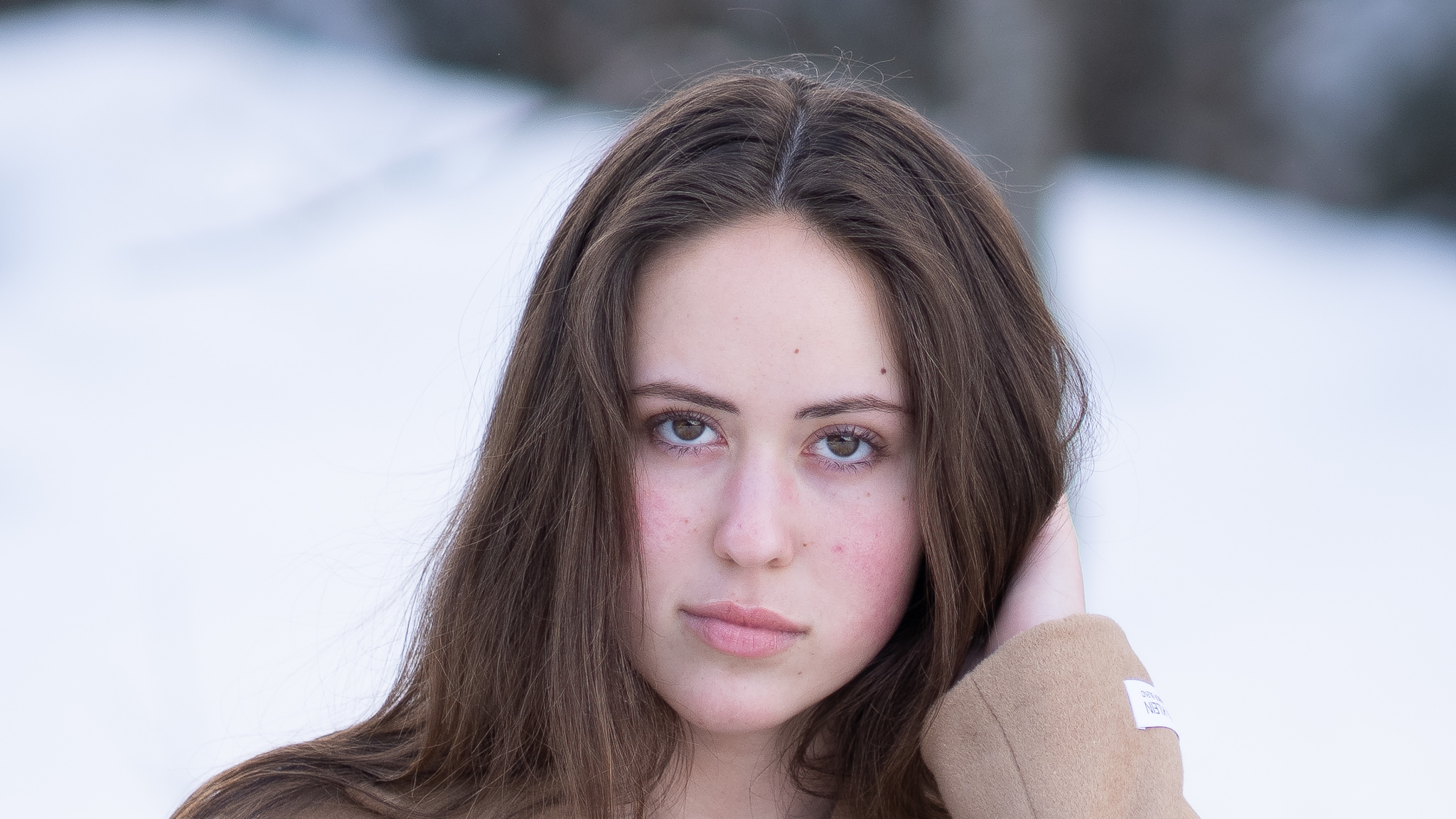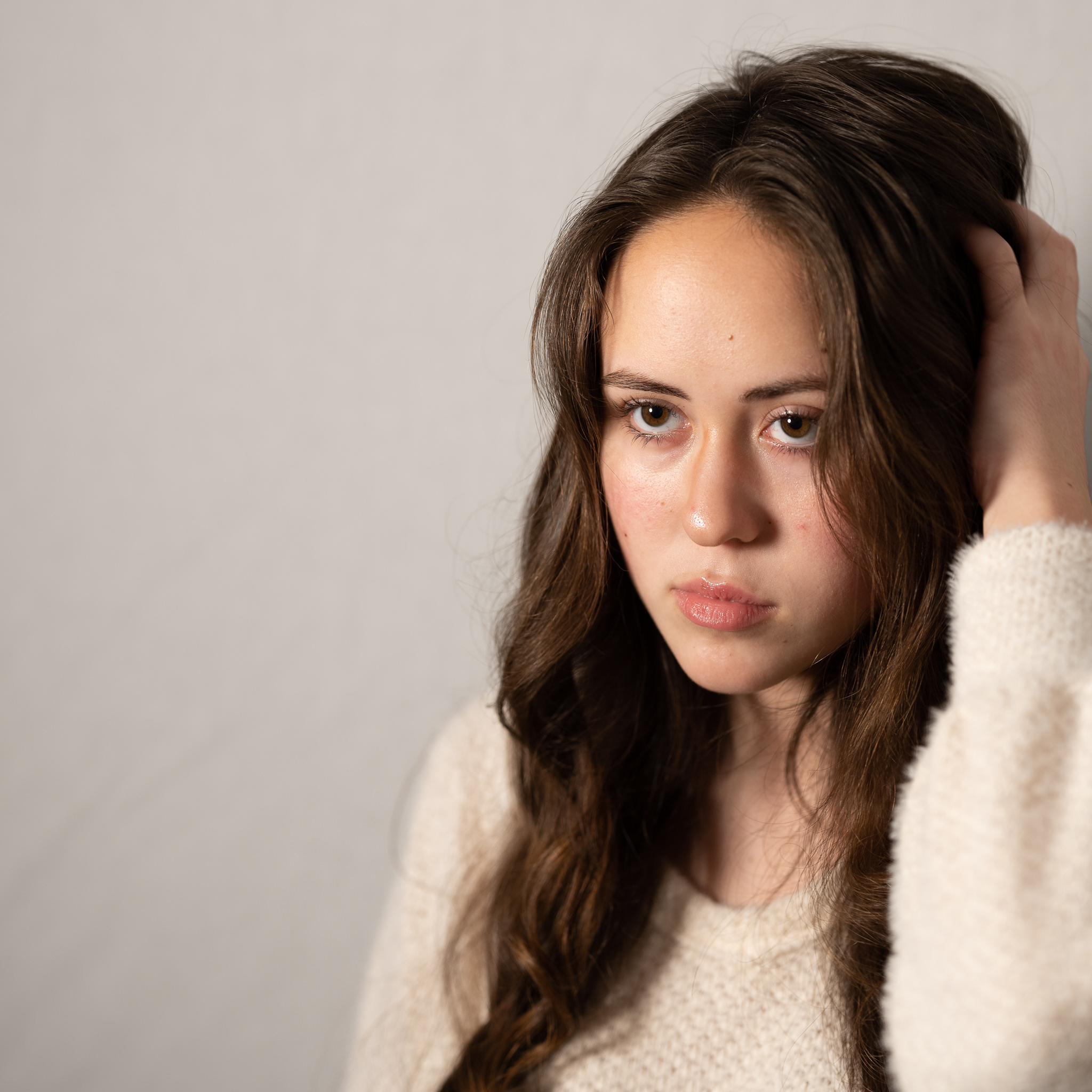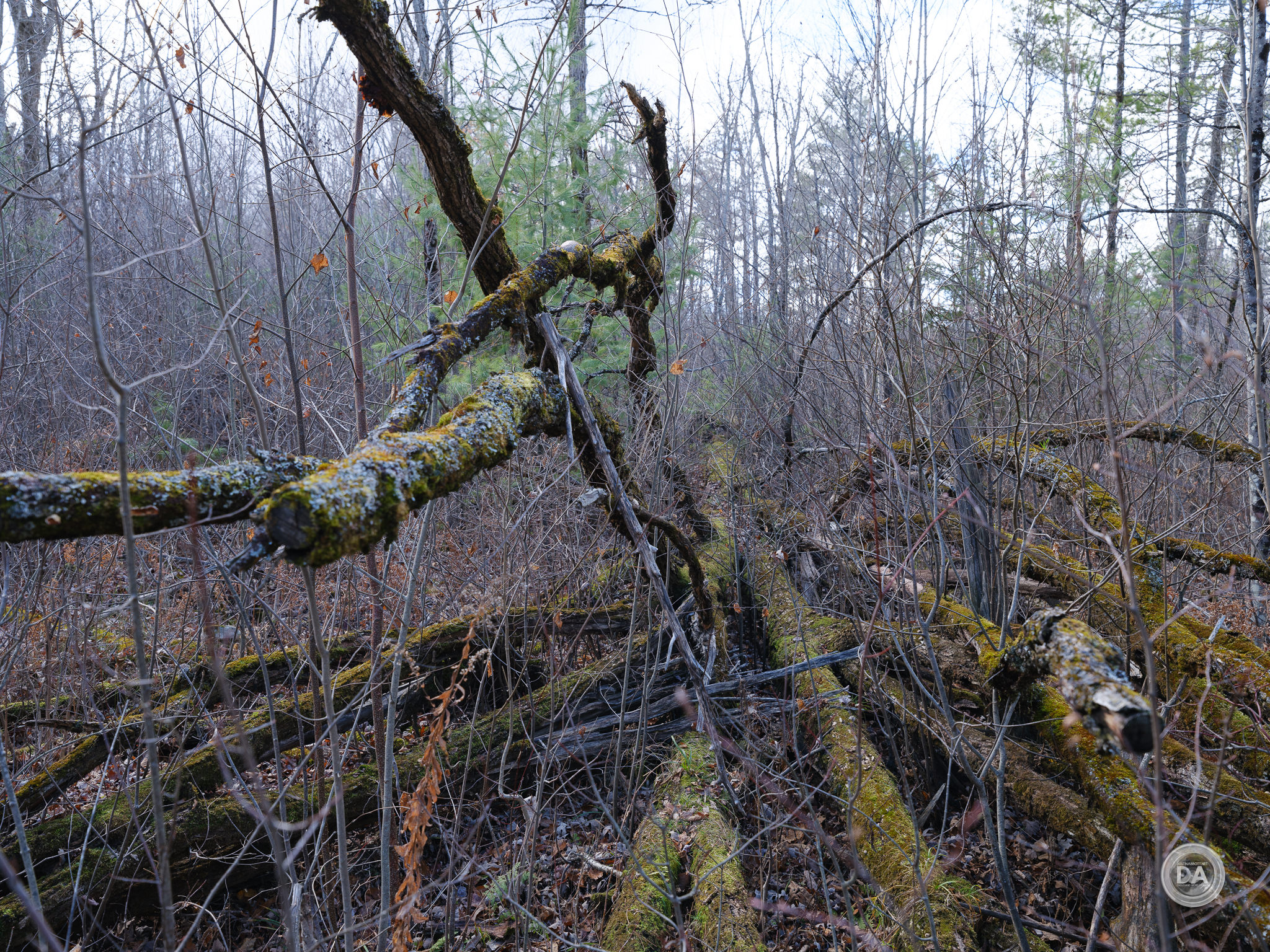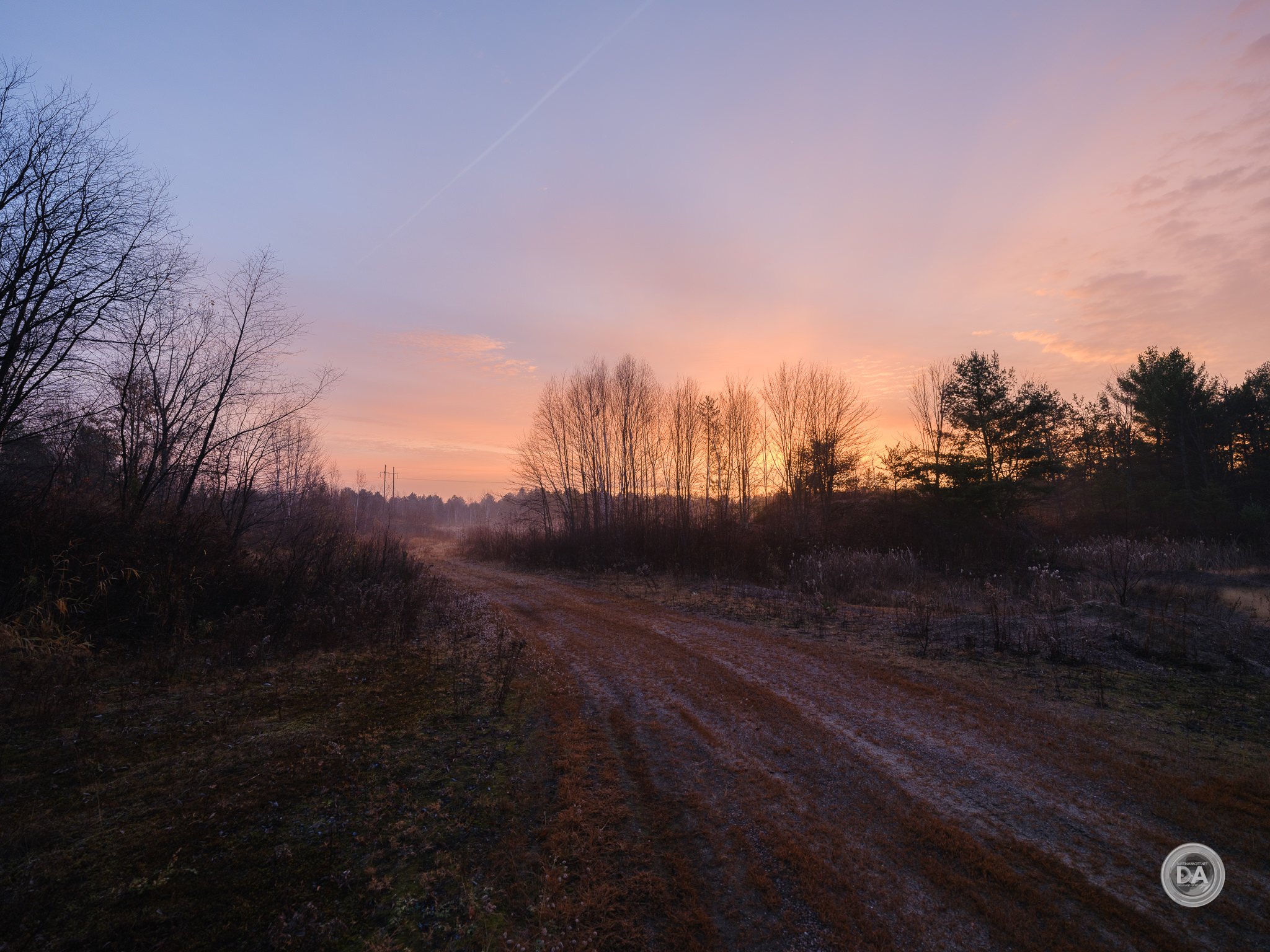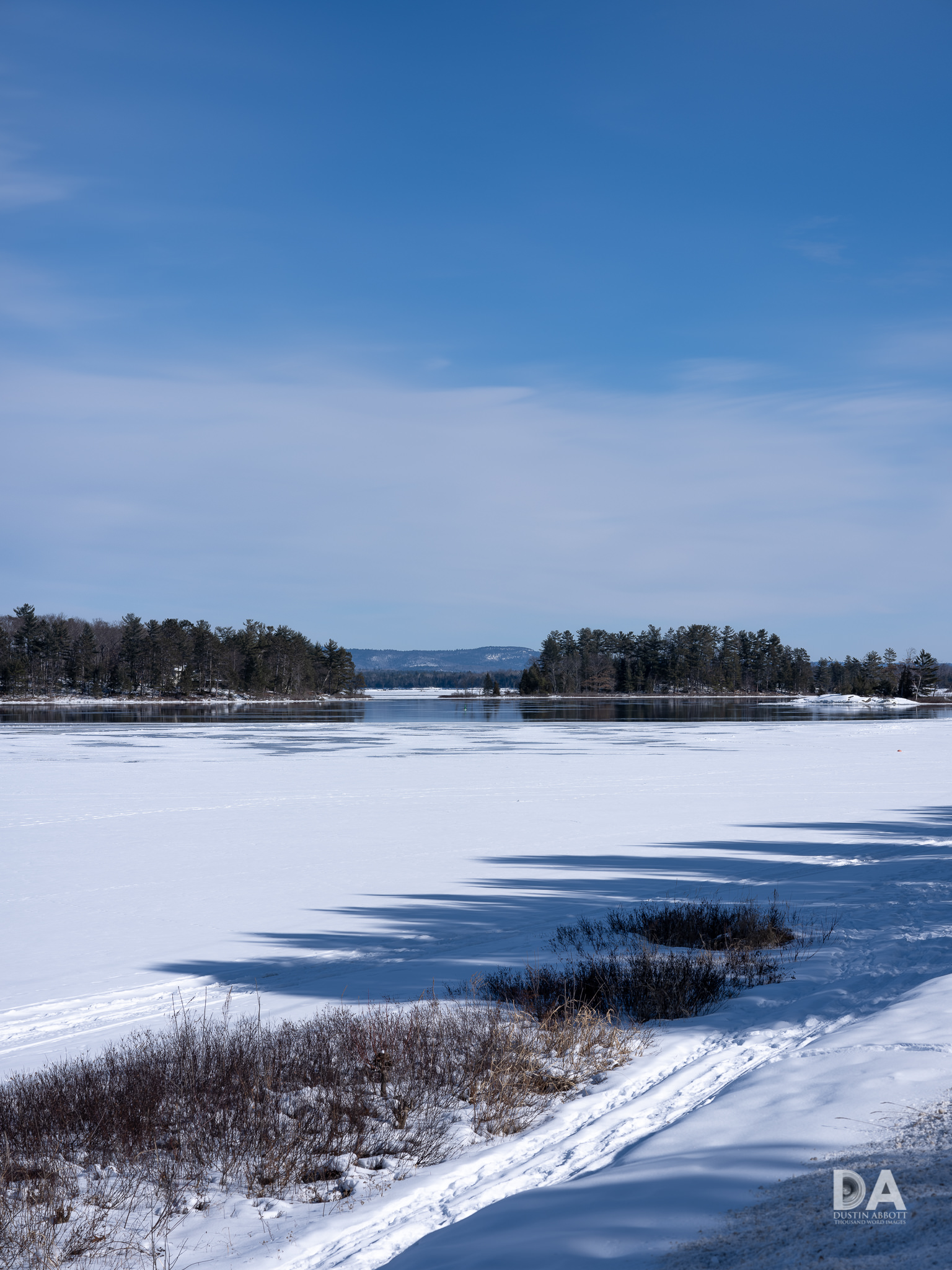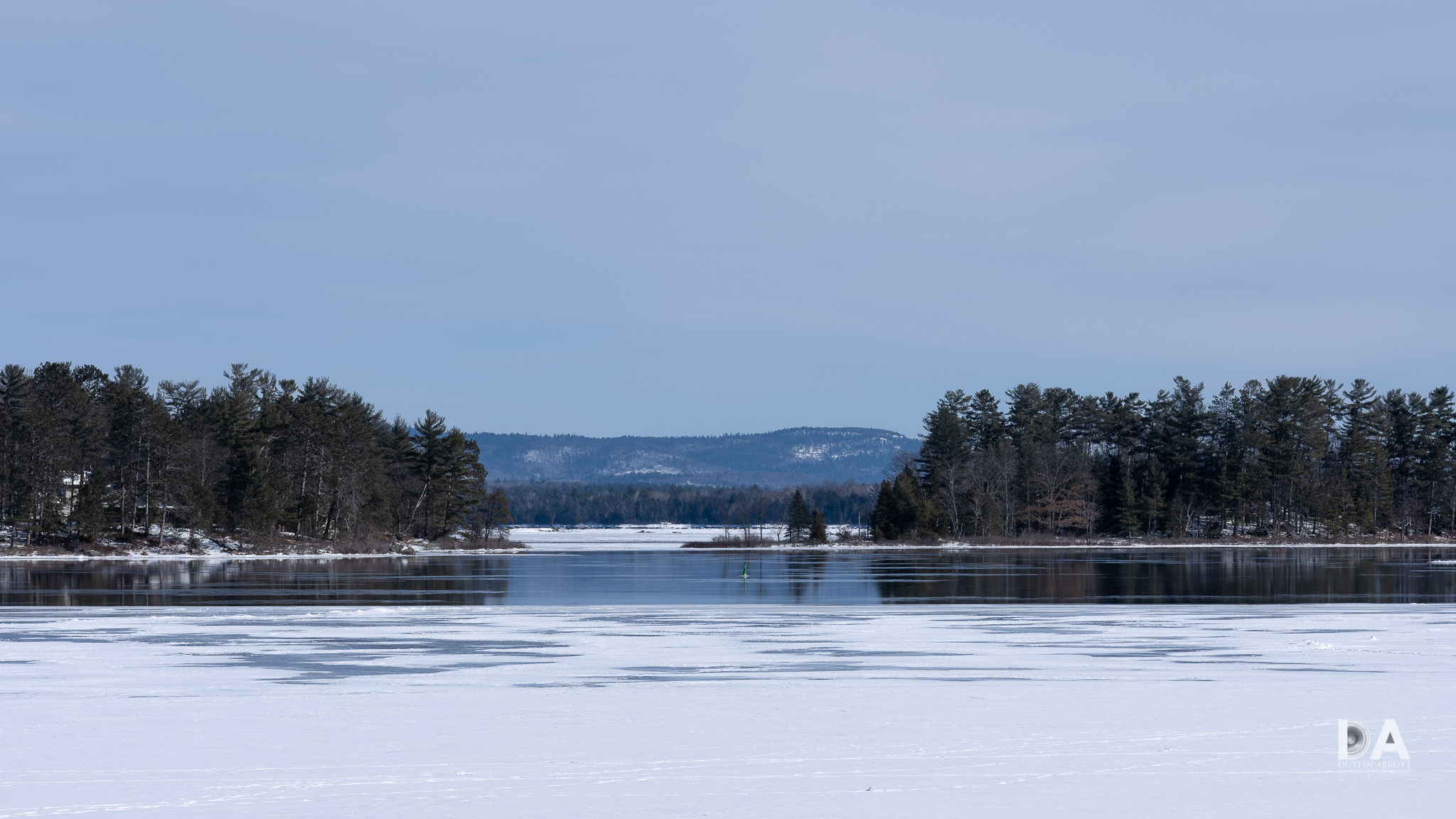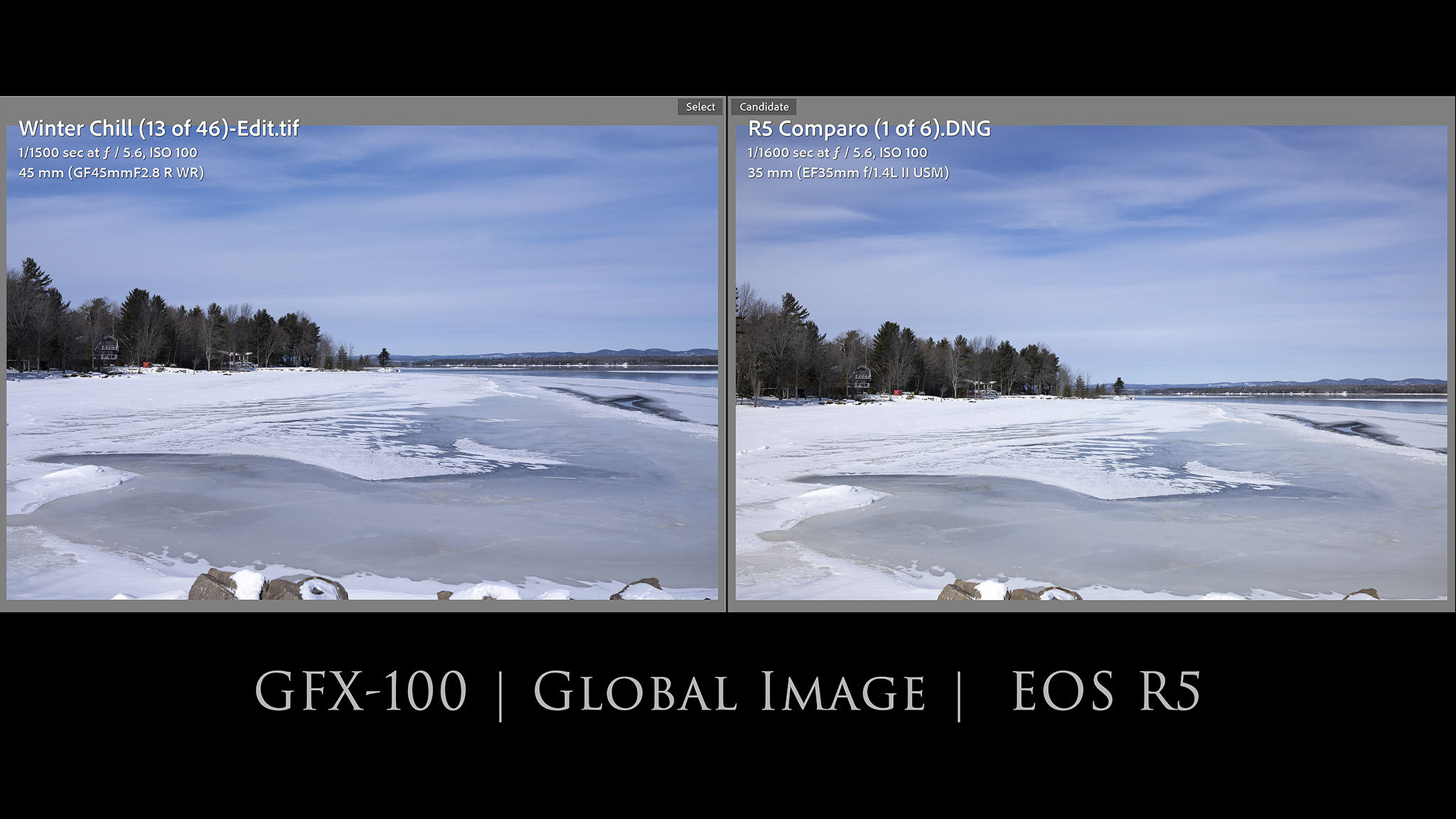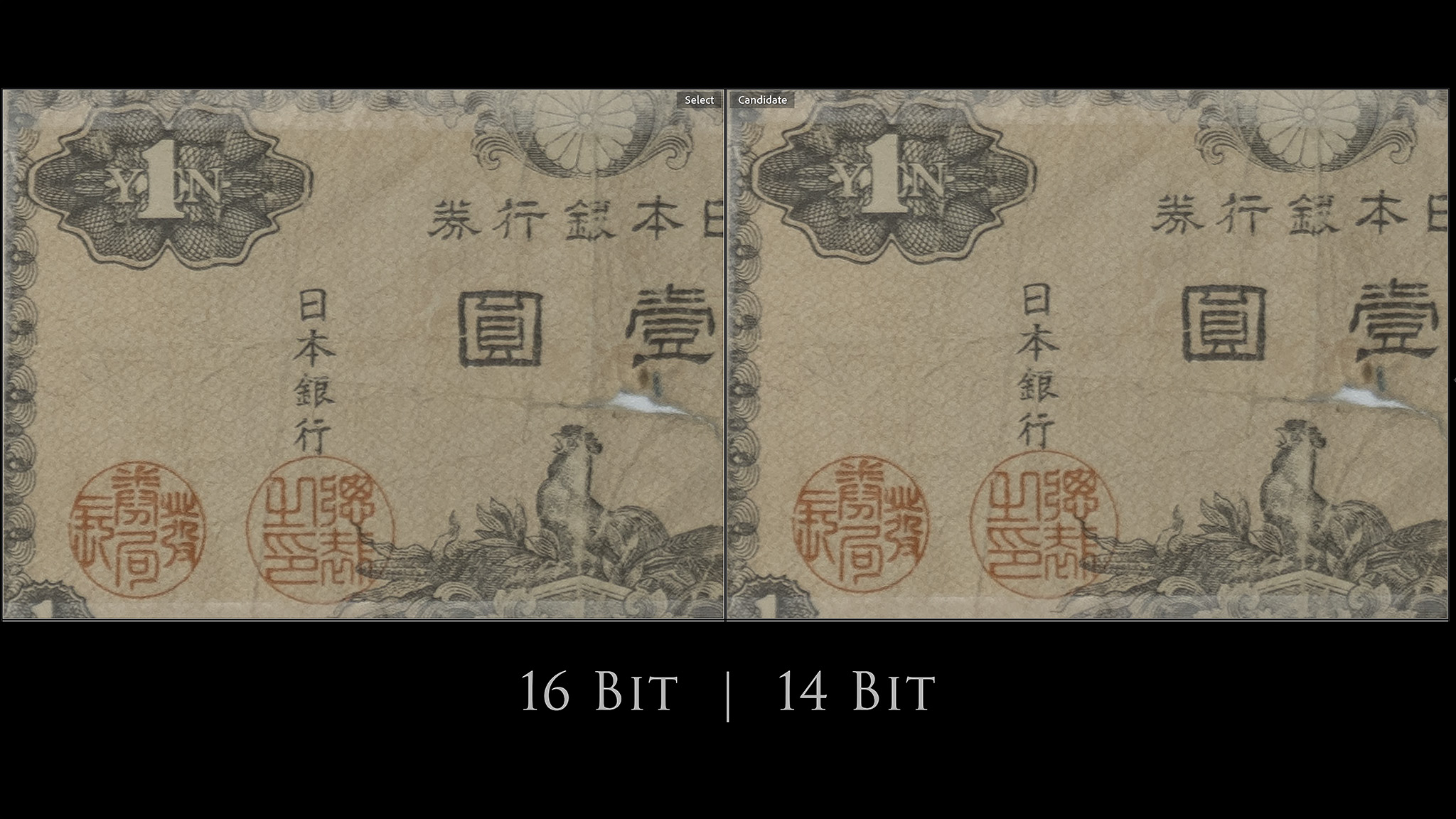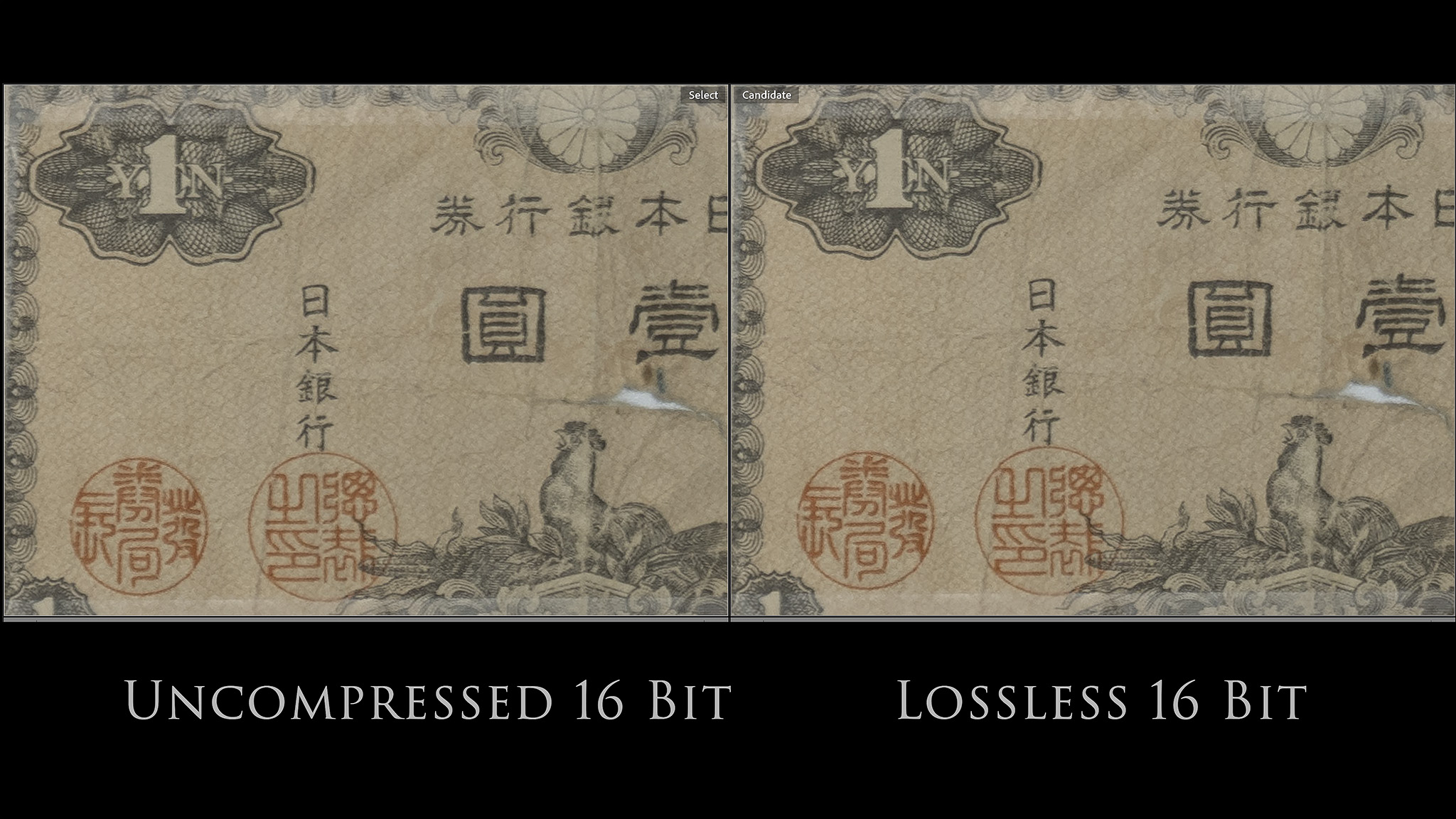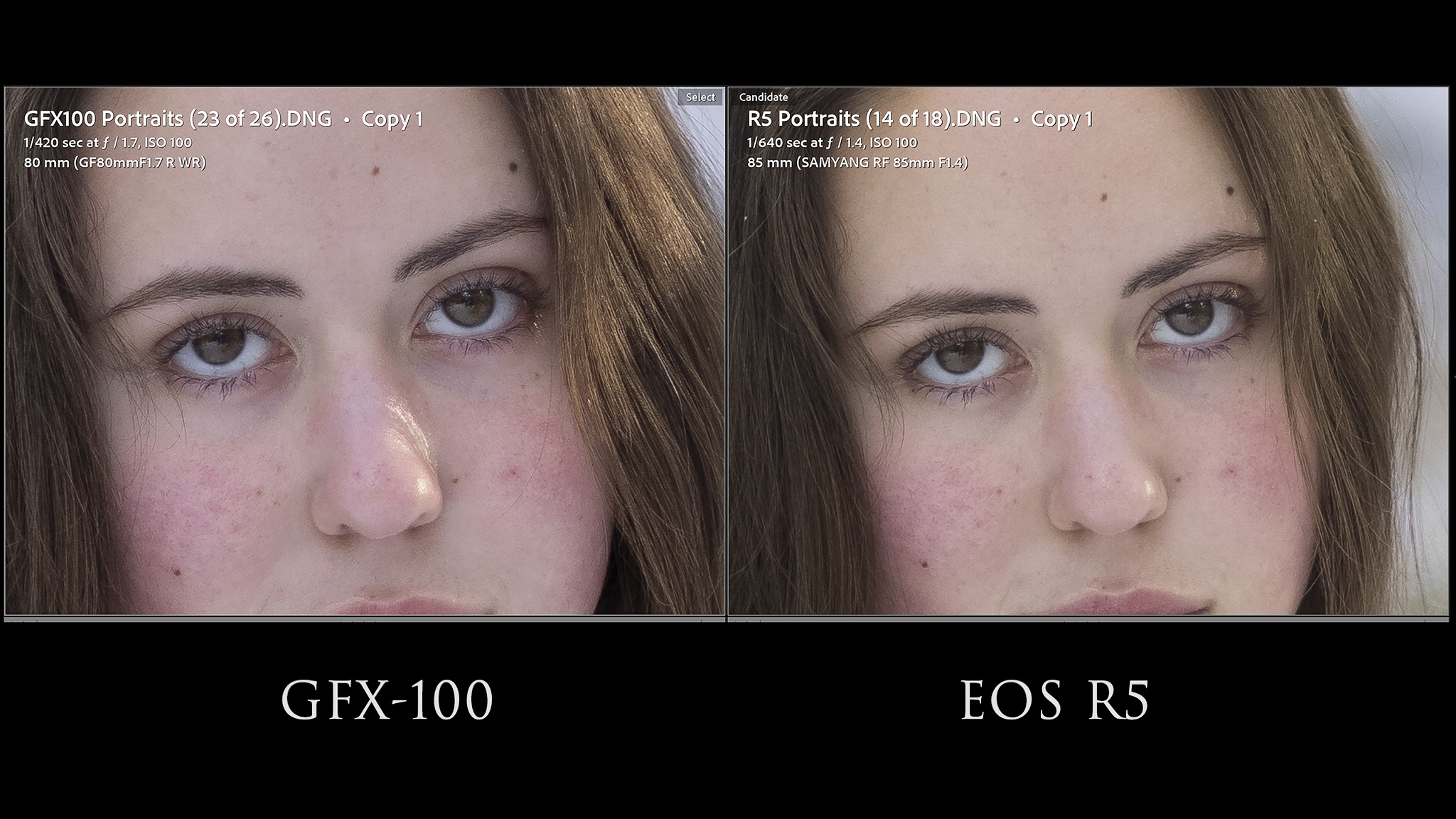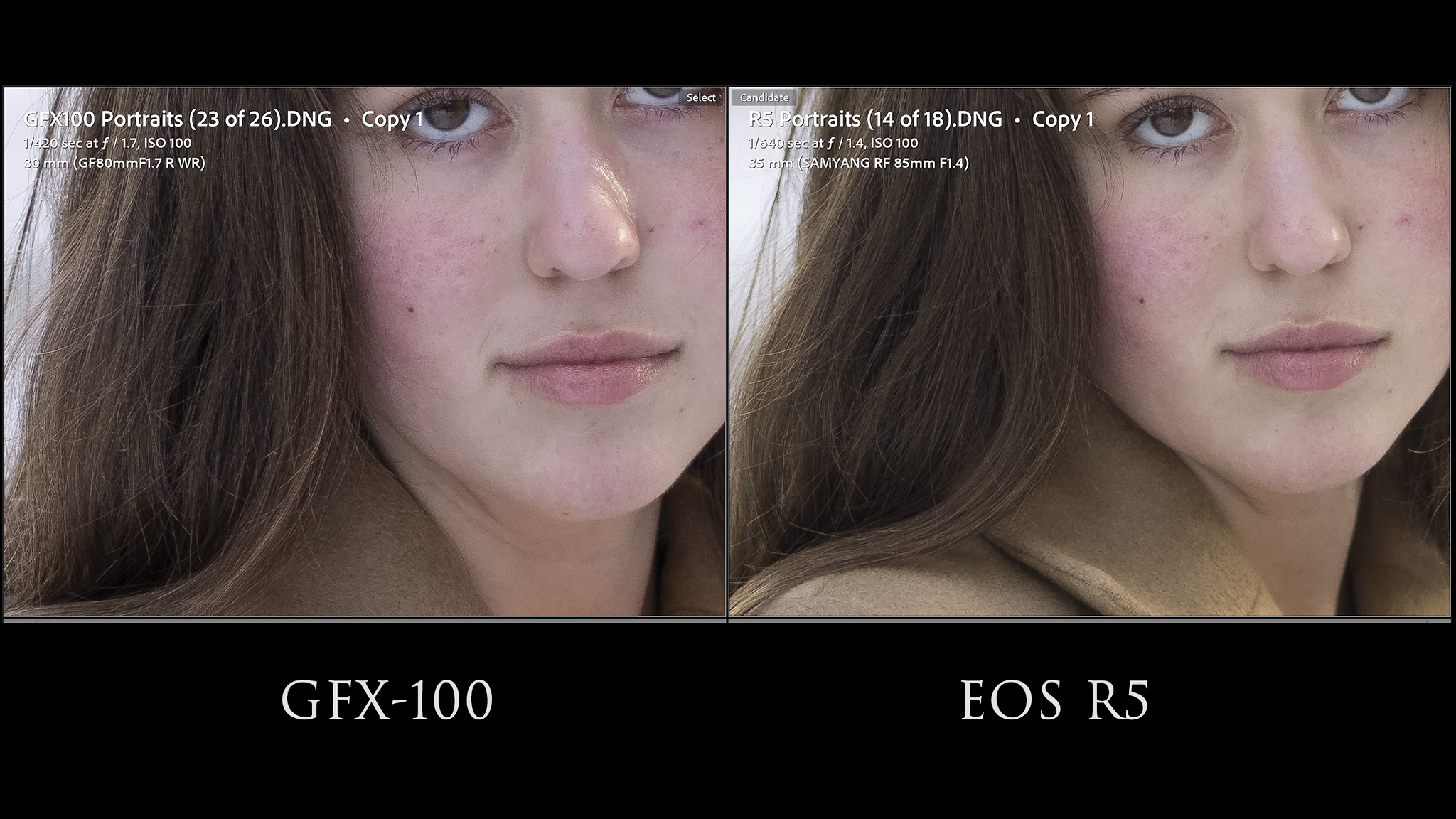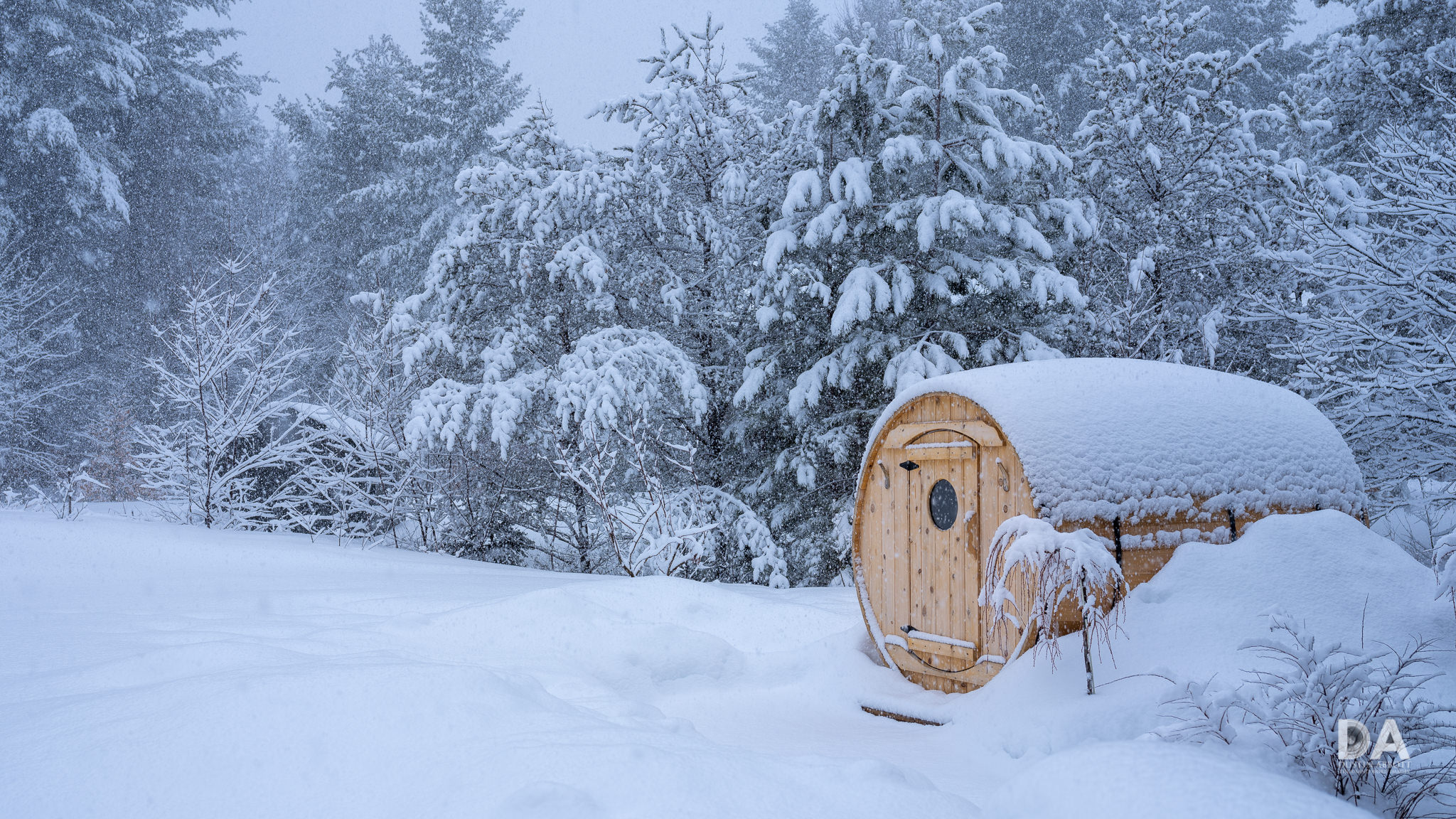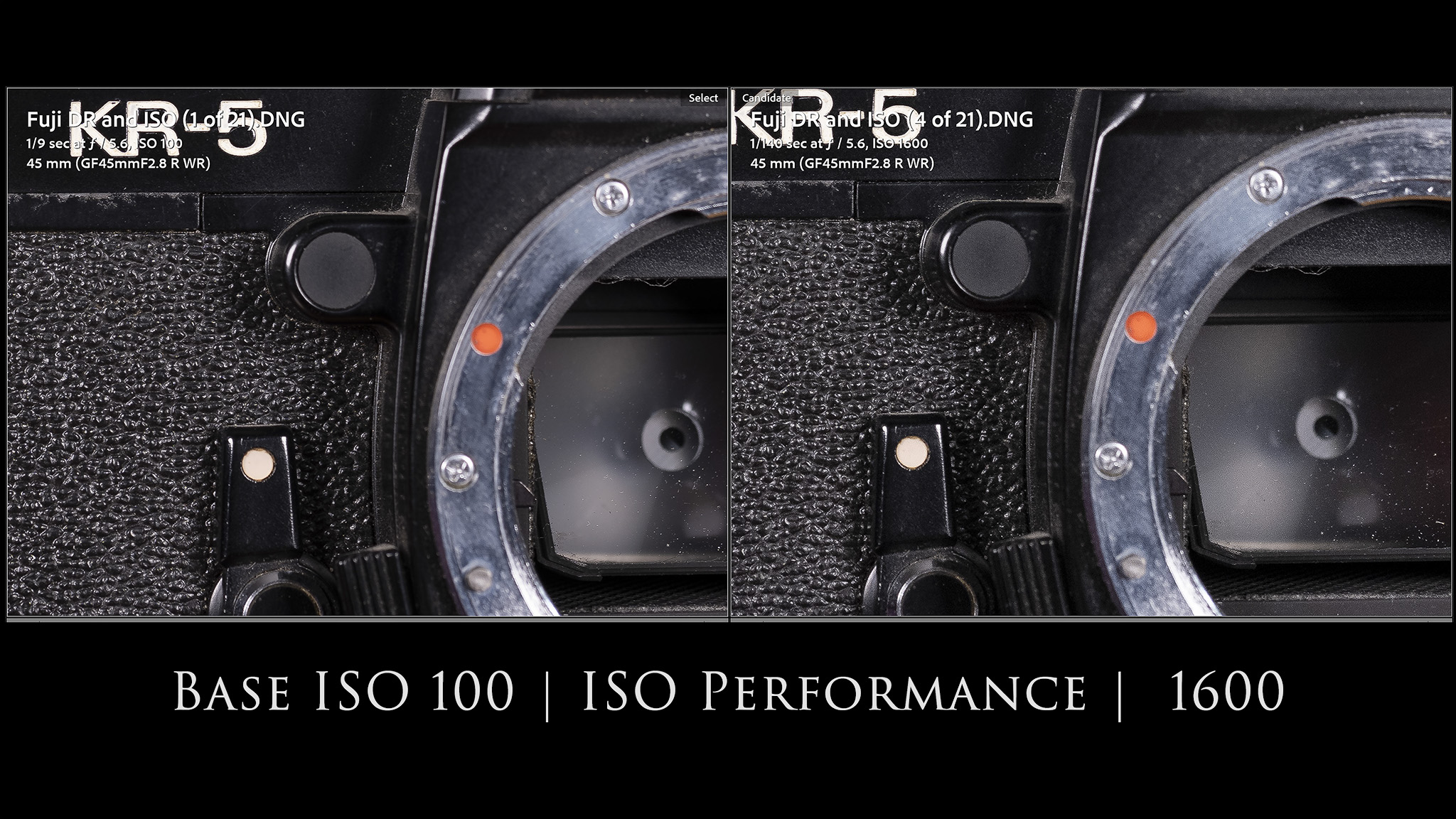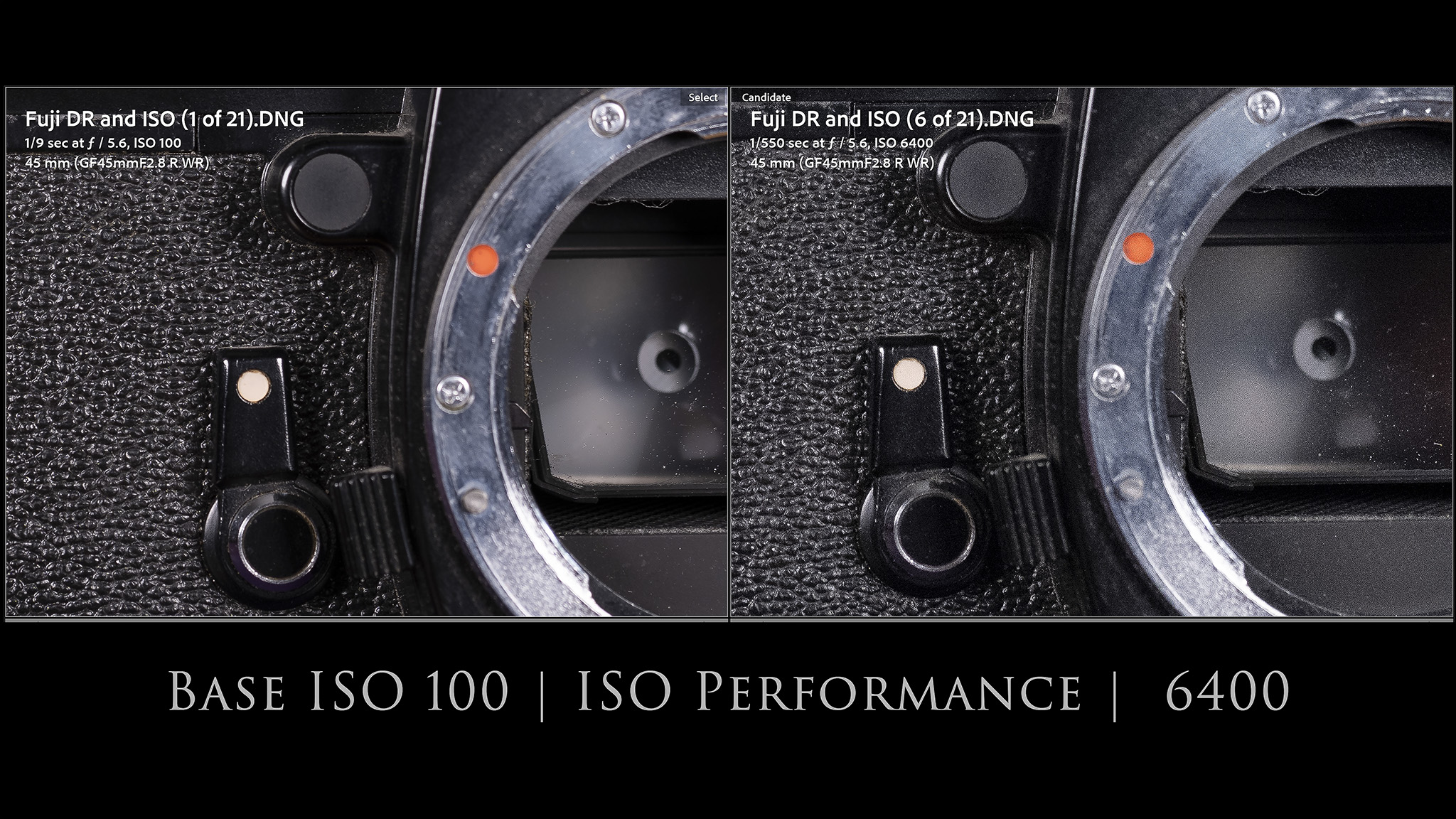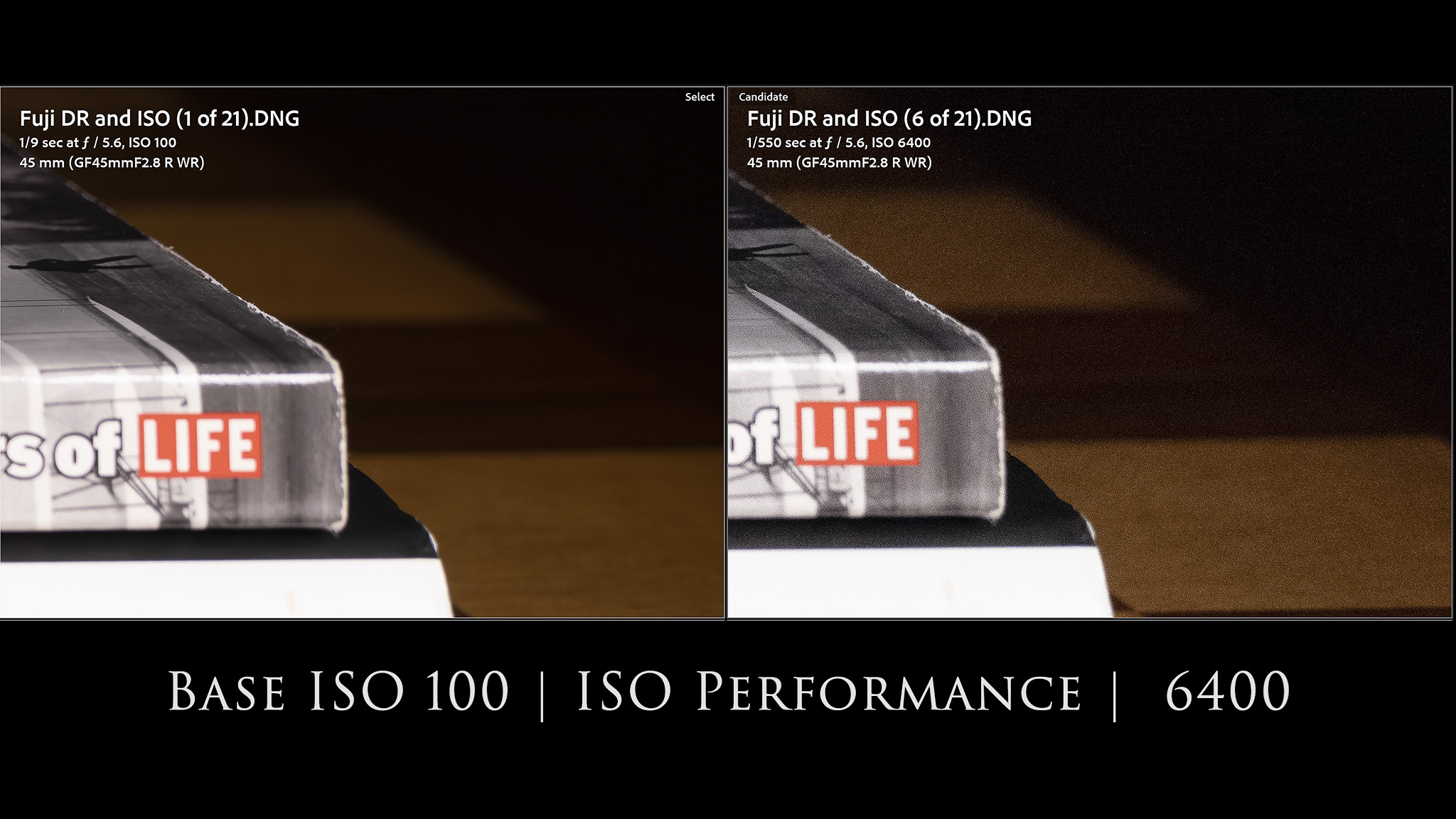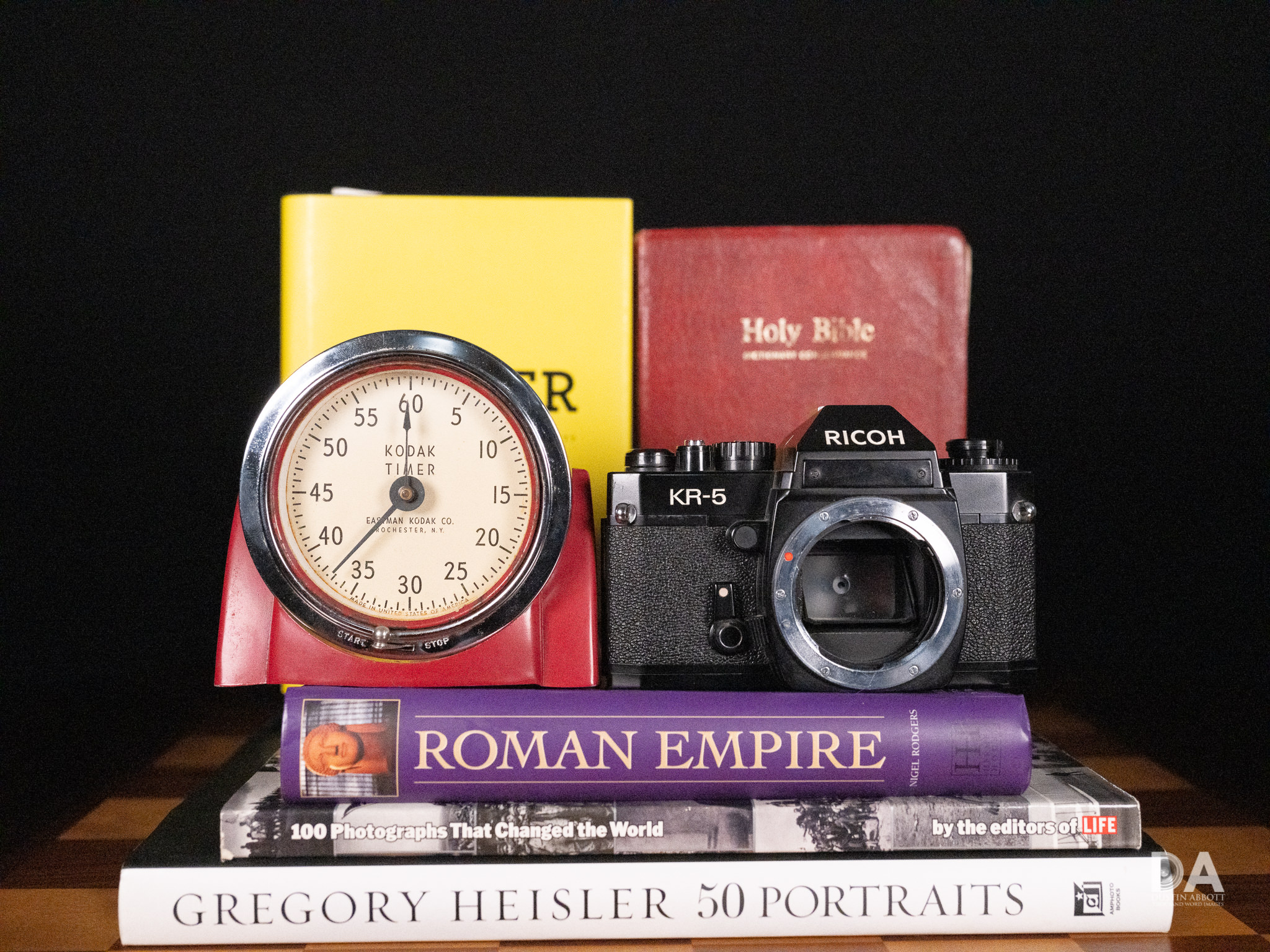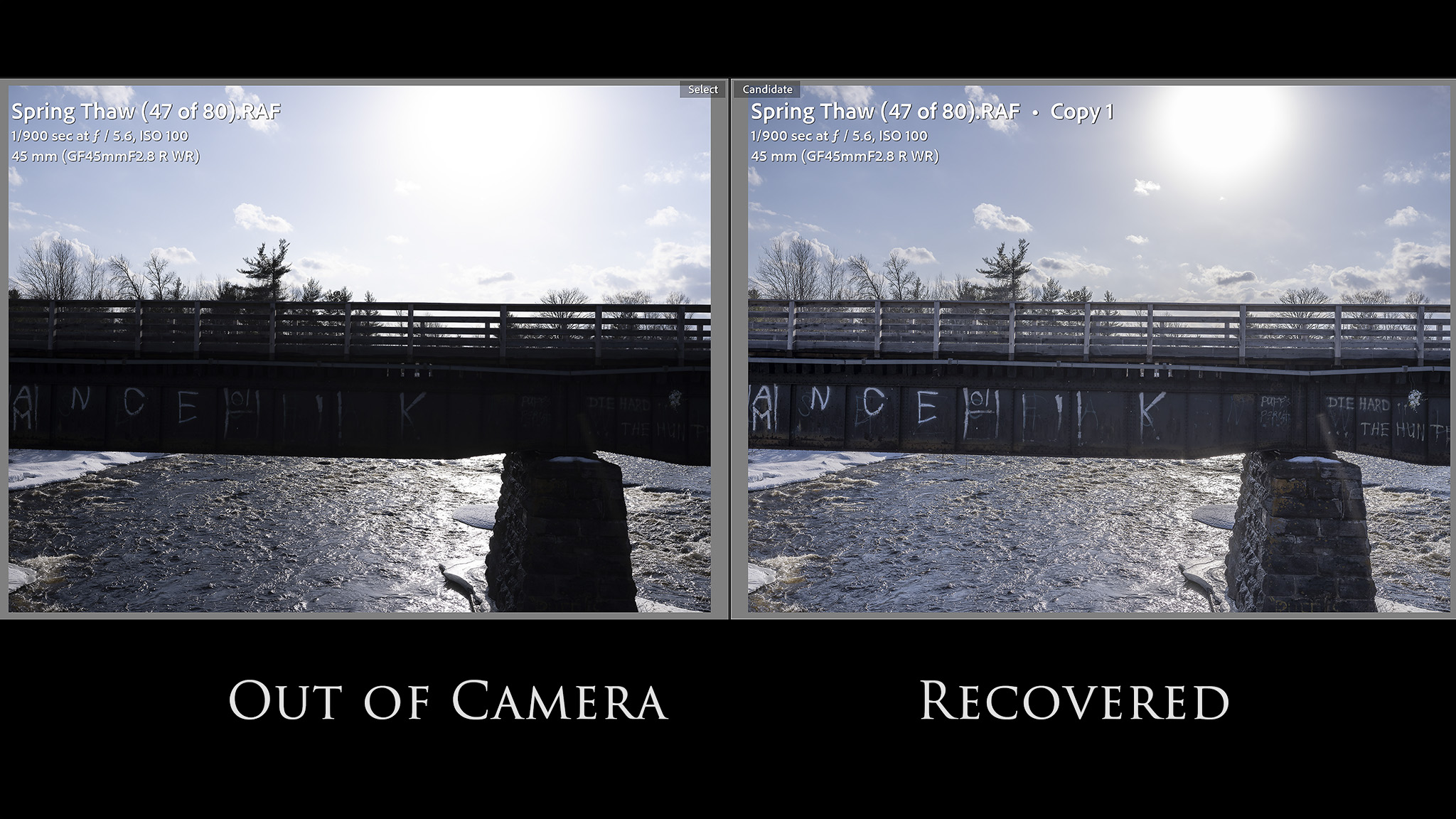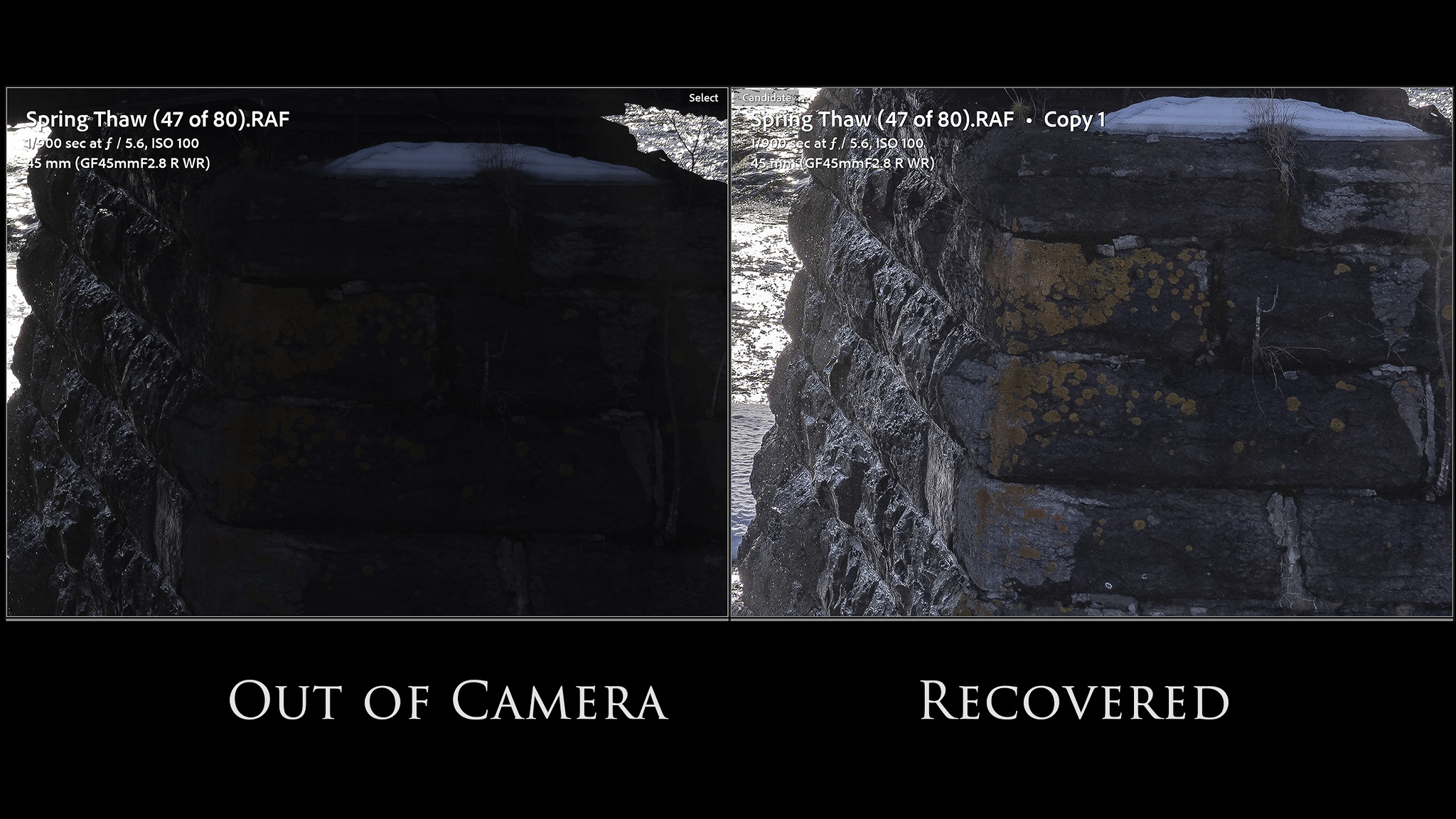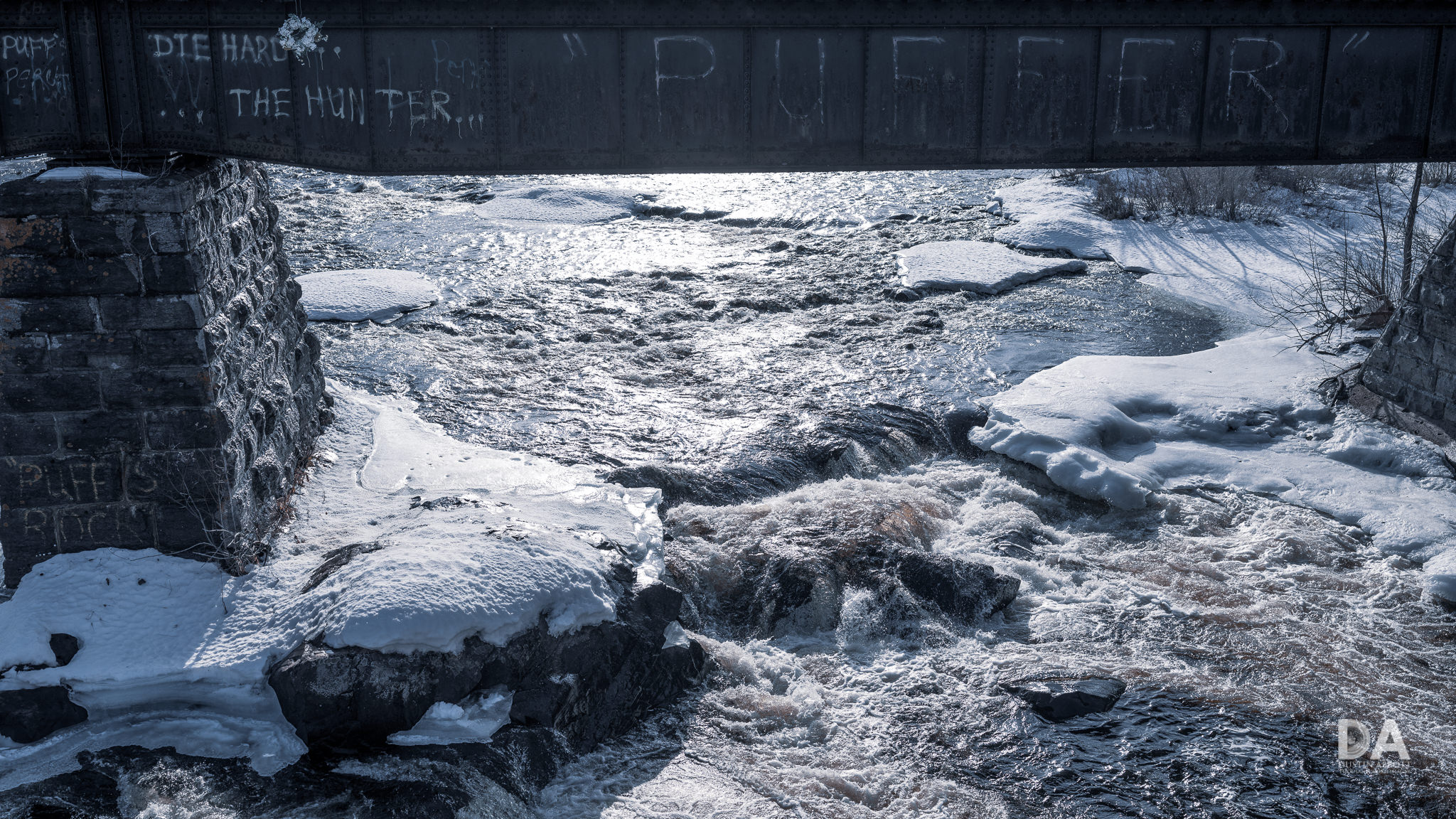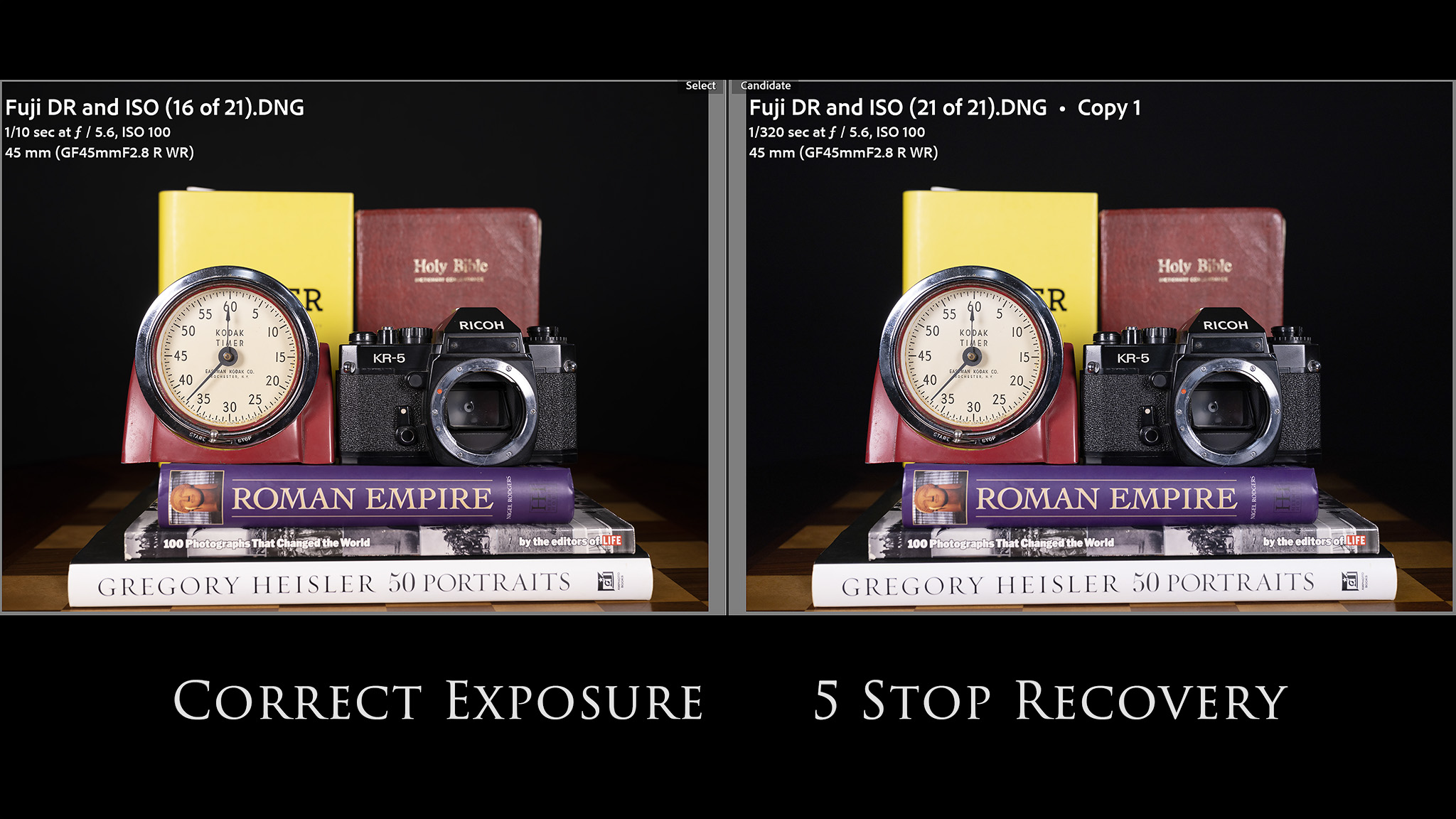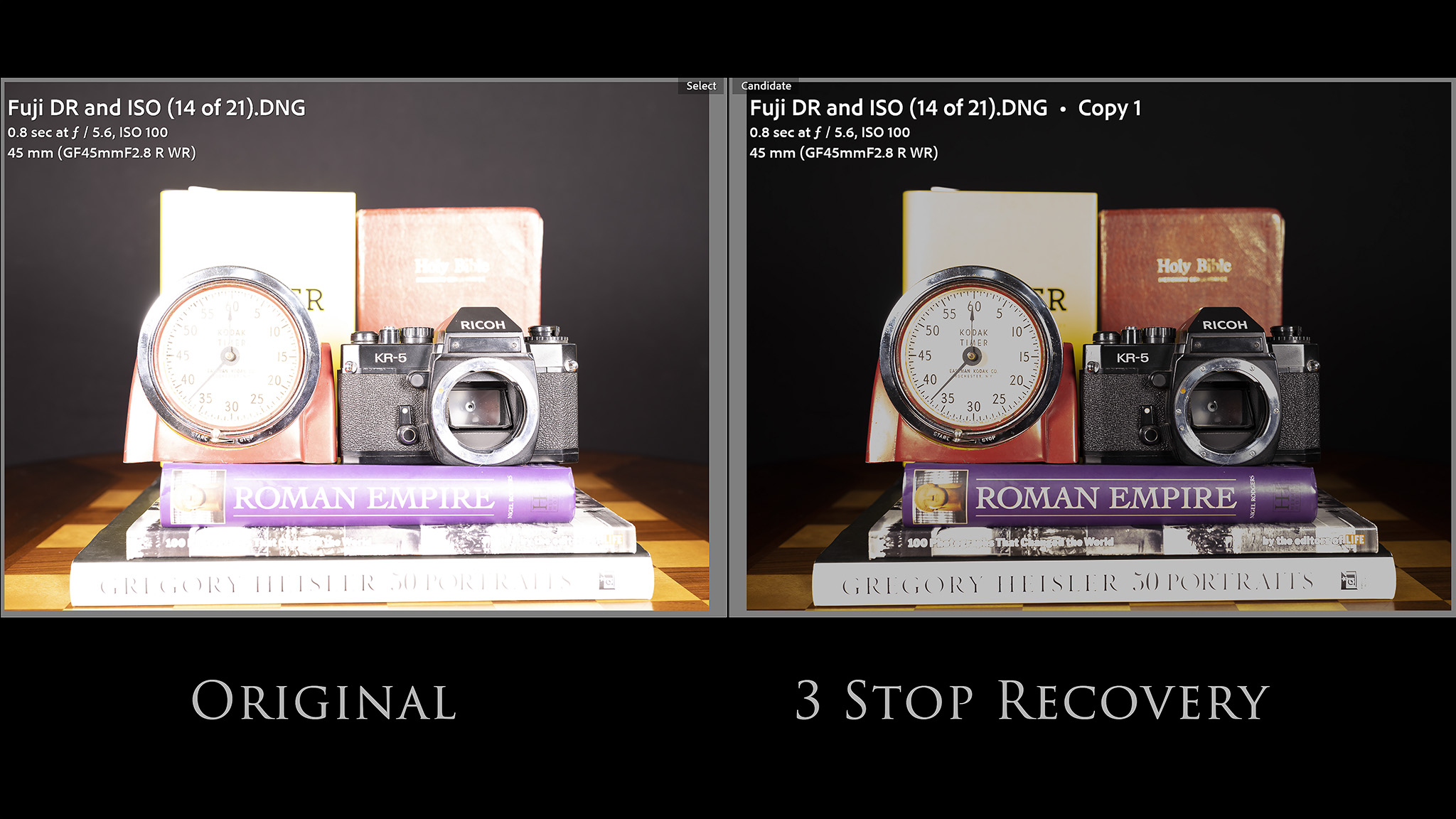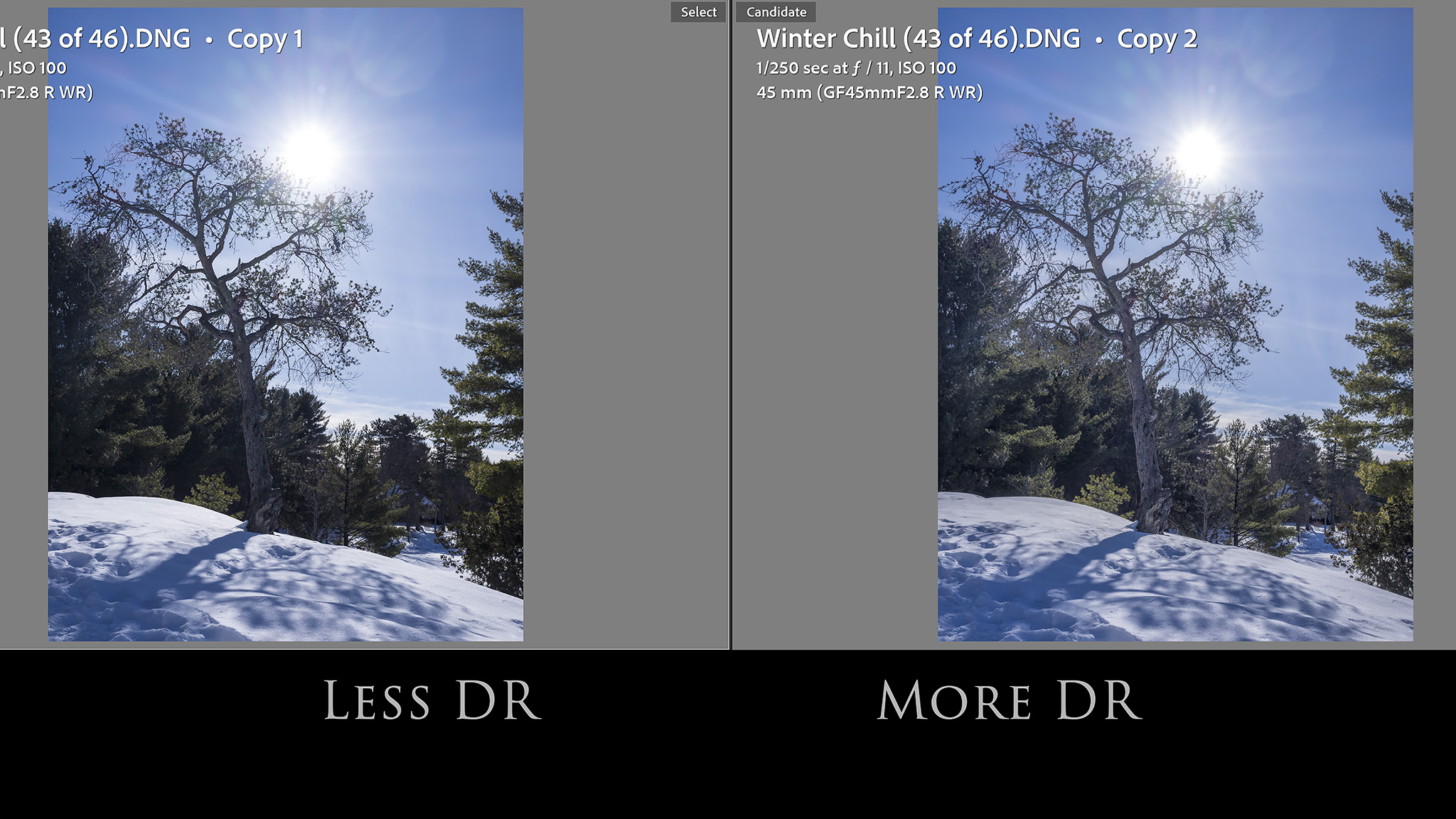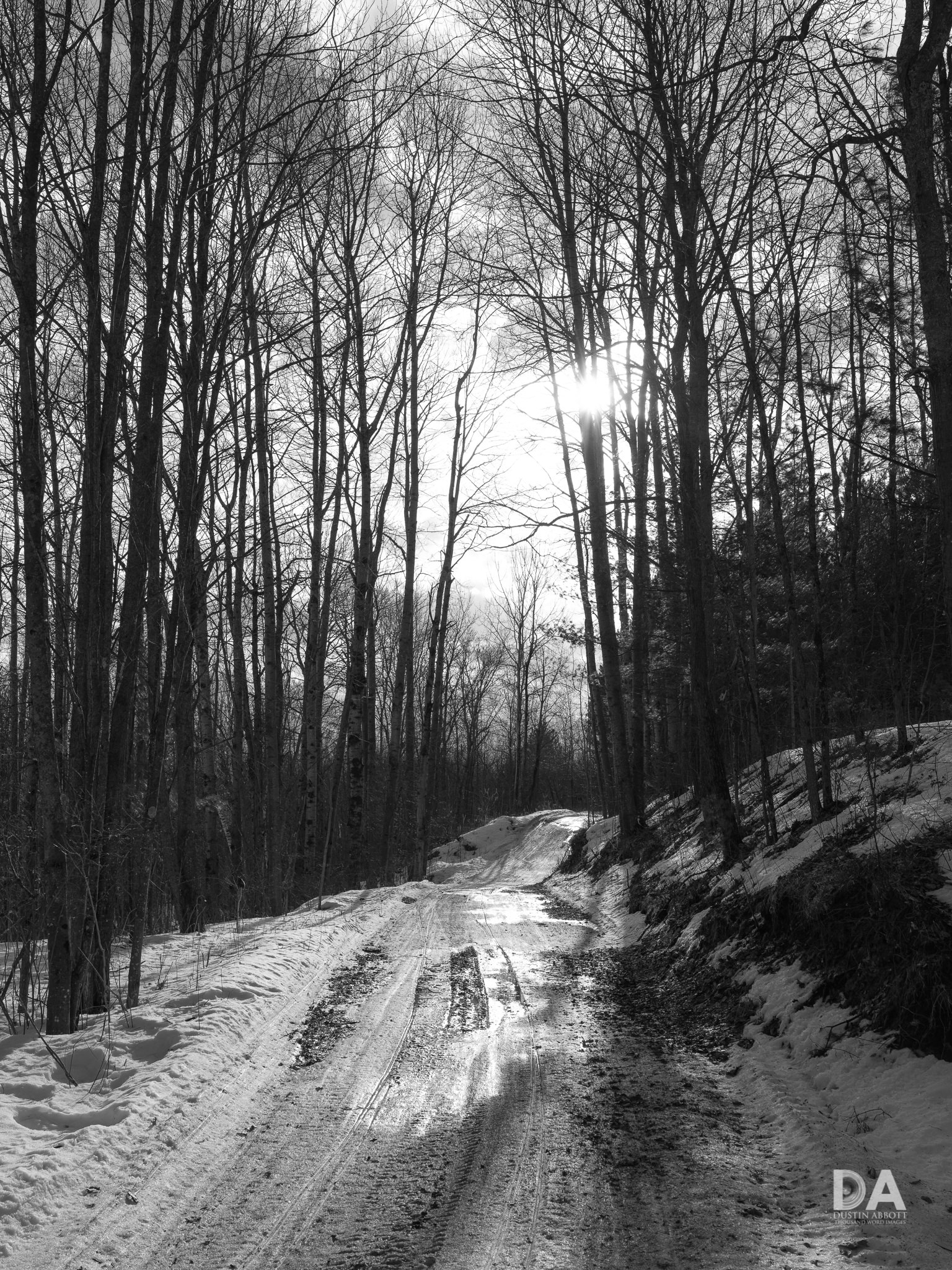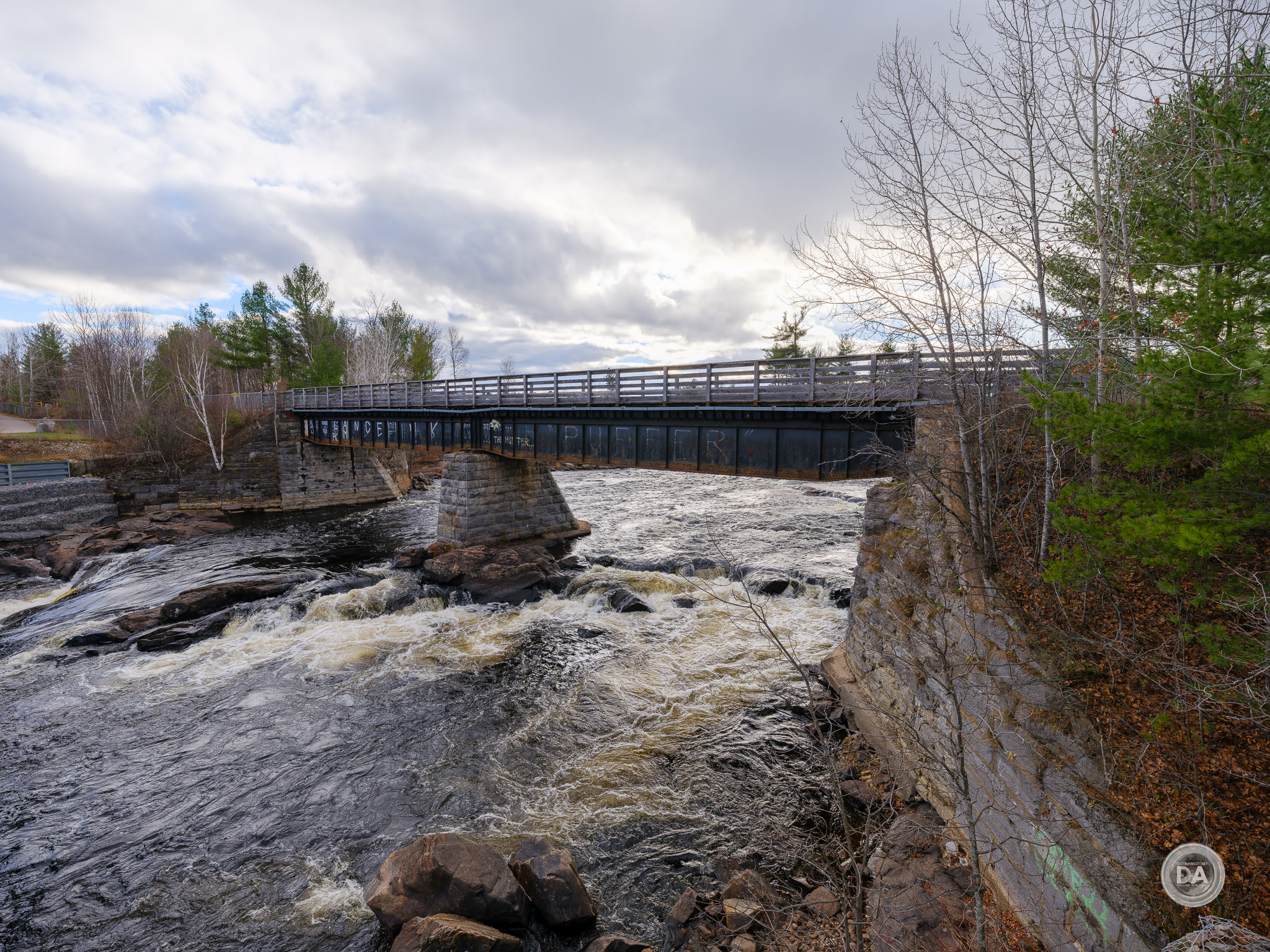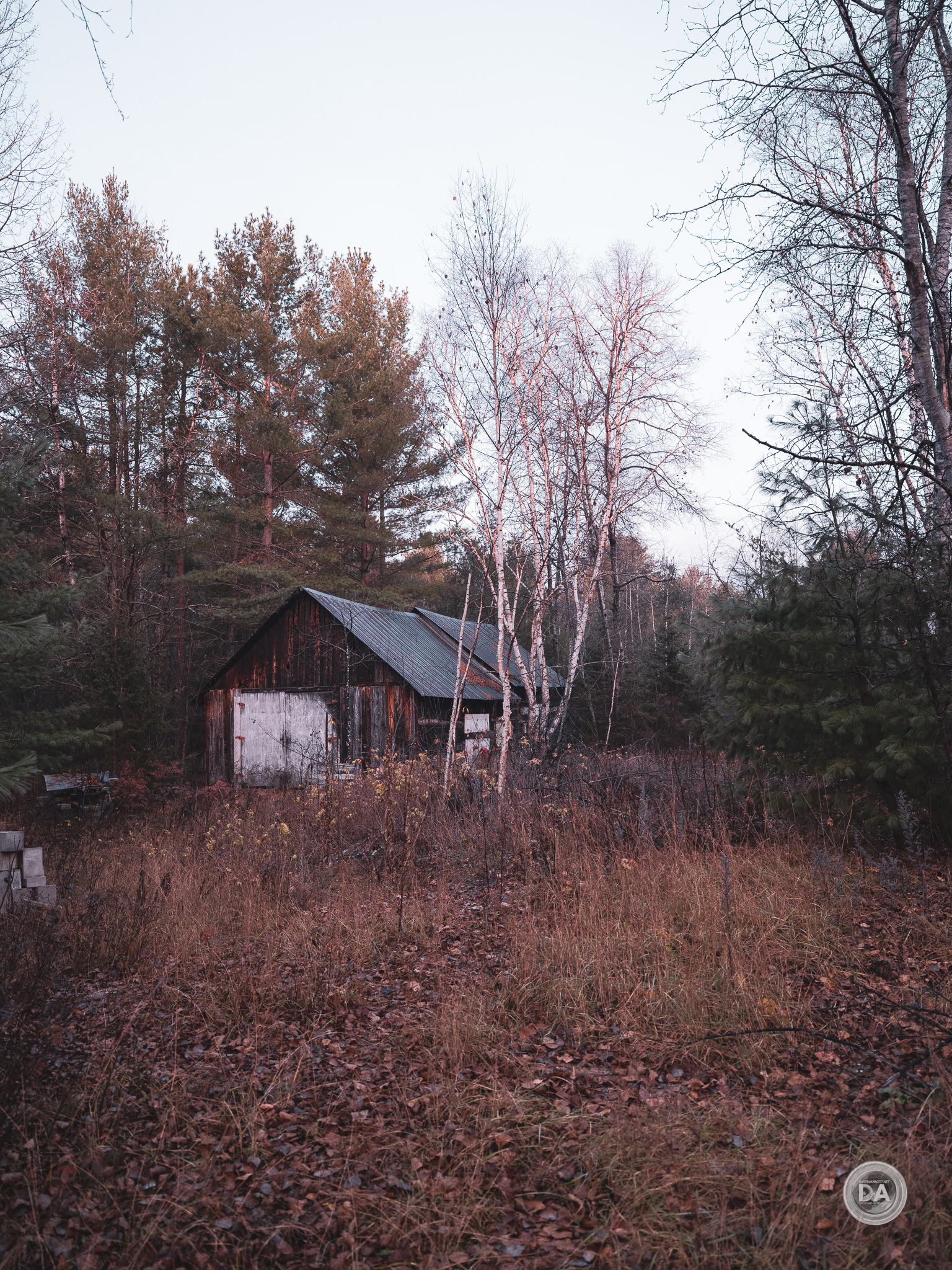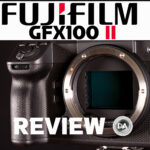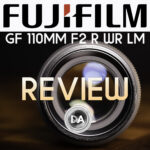The Fujifilm GFX 100S is the third of Fuji’s medium format camera bodies that I have reviewed, and this is definitely my favorite of the bunch. I’ve reviewed their extremely high resolution and extremely high-priced Fujfilm GFX 100 camera body ($10,000 USD) and its incredible 102 megapixels of resolution along with the bargain-end Fujifilm GFX 50S II ($4000 USD) with a more traditional body type. The GFX100S is (to me) the current sweet spot in Fuji’s medium format lineup, utilizing the more compact body and ergonomics of the GFX50S II with the high-end sensor and better (relatively) autofocus system of the GFX100. It isn’t cheap in an absolute sense, but at $6000 USD, it is much closer in price to the GFX 50S II than it is the hugely expensive GFX 100. I personally prefer this body style (without the integrated grip), so if I was buying a Fujifilm medium format body right now, the GFX 100S is the one I’d get.
I tested the GFX 100S as a part of my review of the new Fujinon GF 20-35mm F4 WR, a wide angle zoom that is a very nice pairing for this camera, capable of producing some stunning landscape results:
Purists will point out that Fujifilm’s GFX sensor is not actually true medium format. It’s true that the sensor size (43.8 x 32mm) is about halfway between a full frame sensor (35.9 x 24mm) and Hasselblad’s 53 x 40mm sensor size. You can see a comparison of sensor size below:
While Fuji’s sensor is smaller than the larger Hasselbad/Phase One sensor, it is worth noting that it is also nearly 70% bigger than the full frame standard! But the GFX 100S has even more accessible resolution due to having IBIS (In Body Image Stabilization), as stabilization is really important to getting excellent results where so much resolution is on tap. That makes each individual pixel about 30% bigger, which has the advantage of smoother gradations of color and light. There’s something very special about the rendering from medium format.
I definitely think that Fuji’s higher resolution sensor (the 102MP 43.8 x 32.9mm BSI CMOS Sensor found in this camera) is by far the preferred option largely because the 50MP resolution point has a lot of full frame competitors, and, in my opinion, the current limitations of using medium format cameras are not outweighed by the sensor advantages in the 50MP sensor. This 102MP sensor has a clear advantage over anything currently available on full frame, making it unique and special. I think more photographers might be willing to overlook the MF limitations in order to unlock that amazing image quality. Look how deeply you can crop into this image and still get crystal clear results of this mother and child underneath the towering trees:
Are you a candidate for Fuji’s medium format alternative to the traditional full frame route? Join me as we explore this rather complicated topic. You can watch my video review or just keep reading…
Follow Me @ Patreon | My Newsletter | Instagram | Facebook | Twitter | Flickr | 500px
Thanks to Fujifilm Canada for providing me a review loaner of the GF 20-35mm along with the GFX100S body to test it on. As always, this is a completely independent review. All opinions and conclusions are my own.
Fujifilm GFX 100S Build, Handling, and Features
Here’s a breakdown of the basic features of the camera::
- 102MP 43.8 x 32.9mm BSI CMOS Sensor
- X-Processor 4 Image Processor
- 4K30 Video; F-Log Gamma, 12-Bit Raw Out
- 69m-Dot OLED EVF
- 2″ 2.36m-Dot Tilting Touchscreen LCD
- 5-Axis Sensor-Shift Image Stabilization
- 425-Point Phase-Detection Autofocus
- ISO 100-12800, up to 5 fps Shooting
- 400MP Pixel Shift Multi-Shot
- 19 Film Simulation Modes
If you are unfamiliar with medium format and know Fuji more for X-mount, prepare to be shocked by how huge the mount size actually is. That opening to the sensor is massive!
The inner mount diameter is 65mm, which is significantly larger than Fuji’s own APS-C X-mount (44mm), Sony E-mount (46.1mm), Canon’s RF (54mm), or Nikon’s Z mount (55mm). The front opening of lenses changes according to the focal length and aperture combination, but the rear diameter at the mount is consistent. This means that medium format lenses are going to be bigger than comparative Sony full frame lenses as a matter of course, because they start at nearly a 66% larger diameter. While the image circle is smaller than the Hasselblad 53.4 x 40mm sensor, it is still considerably bigger than any full frame image circle, and the lens mount diameter reflects that.
You’ll note that the chart in the opening section also shows the various crop factors associated with the size of the relative sensors. A full frame sensor has a 1.0x crop factor, and the industry standard for focal lengths is in the full frame/35mm standard because of this. A 100mm lens, then, will behave like 100mm on the 35mm/full frame sensor, while the same lens mounted on a Fuji APS-C sensor (1.5x crop factor), will behave like a 150mm lens (full frame equivalent) in terms of focal length. Mount that same focal length on Fuji’s medium format (0.79x crop factor), and it will behave like a 79mm focal length. This helps explain why many of the focal lengths of Fuji’s GF lenses are atypical. I’ve previous reviewed the Fujinon GF 110mm F2 lens from Fuji, and if you do the math, it roughly corresponds an 85mm F1.4 lens (Fuji says it has an 87mm full frame equivalent focal length). You can see that the framing and depth of field from the GF 110mm is about the same as the Sigma 85mm F1.4 DN lens I had mounted on the Sony Alpha 1.
I personally didn’t love the body of the GFX100, as I found it unnecessarily large. It had the chunkiest grip of any camera I’ve used (the camera is 102.9mm/4.05″ deep), and while I have medium large hands, I can feel a slight stretch in my grip. The GFX100S, while large, was an immediate fit to my hands and felt very much like a professional full frame camera (Canon 5D series, for example) in my hands. The grip depth was a much more reasonable 87.2mm (3.4″), which is nearly 16mm more shallow. The body is roughly 150mm wide and 104mm tall and weighs a manageable 900g with memory cards and battery inserted.
When I used it and the new 20-35mm F4 it felt pretty much like using a slightly large full frame camera.
I love this physical size, and I also loved the general feel of the camera in hand. For some reason it feels slightly more robust and professional grade than my other cameras. The body is made of magnesium alloy, the preferred material for tough, professional grade cameras, and Fuji notes 60 different seal points in the body to make it highly weather resistant. Fuji utilizes the 2200Mah NP-W235 battery pack that is rated for a rather average 460 shots here. Getting a spare is always a good idea. You have different charging options including charging in camera.
On the right side we have dual SD/SDHC/SDXC (UHS-II) card slots behind a door, with a smaller flap above that covers a remote shutter release port.
The left side of the camera has the other ports, with the top section housing a microphone input along with a headphone monitoring jack and the bottom compartment housing a USB-C port, micro-HDMI, and a flash sync port. The compartment doors feel precisely engineered.
This is essentially the exact same body as what I tested in the GFX50S II, and it shares similar controls. I’ve found it a little surprising that these higher end cameras have fewer physical controls than many of their lower end APS-C cameras. Fuji cameras are typically known by their plethora of physical controls (particularly dials), so it is more than a little ironic that their flagship cameras almost entirely abandon those physical dials for virtual ones accessible through the top LCD. ISO, shutter speed, mode, and exposure compensation are typically handled via dials on the X-T3 or X-T4; none of these are handled by physical dials here. I miss the dedicated exposure compensation dial, for example. It is handled instead by pressing the button to the right of the On/OFF dial and then using one of the two control wheels. It’s not nearly as intuitive to me. I found, in fact, that the out of the box setup of the camera left a lot of common functions (changing ISO, for example) a little difficult to access. Fortunately almost everything on the camera is customizable, and I enjoyed using the camera much more after I spent some time setting up everything to what I found more logical.
I love the LCD screen on the top plate, however. It is bright and clear and retains a passive display when the camera is powered off. You have three options for the top display that you can cycle through by pushing the small button on the lower right. One imitates two dials, which shift depending on what mode you are in, a second simply shows histogram, and the third reorganizes the information and shows you a bit more on screen. Most changes are made via the front or rear dials. A button to the left of the screen will light up the top LCD if you are working in a dimly lit environment.
On the left side of the viewfinder are two other control points. One is a traditional mode dial though with more custom modes than I’ve typically seen (6!). I like both the many custom modes and also the mode dial; it remains an easy, logical way to navigate different camera modes. There is a locking button in the middle. There’s also a switch that allows you to go from stills to movie function (allowing you to have a custom setup for both modes).
The main LCD screen is a 3.2″ 2.36 million dot touchscreen that can tilt on two axis – this allows you to get some function even when shooting at odd angles and in portrait orientation. I still prefer a fully articulating screen, but this is more functional than some of Sony’s tilt screen. The touch function is typical for Fuji cameras at this point, allowing for touch to focus and shoot, but menu navigation is limited to the Q (quick) menu; you cannot navigate the main menu via touch. There’s also a bit more lag than recent Canon or Sony bodies when you touch. I do find Fuji’s quick menus a little frustrating, too, as what intuitively feels like a click to select (on the joystick) saves the selection and closes the menu, which often necessitates my opening it again to make other selections.
The back of the camera has the typical collection of buttons and the mini-joystick common to Fuji’s designs. The joystick is the improved design first seen on the GFX100S; larger and easier to use. The control wheels on the front and back can also be clicked in for an additional function. I like the mode selector near the viewfinder that allows you to quickly move between Single Shot, Continuous AF, and Manual Focus.
The front of the camera is fairly simple with a single programmable button and the front control wheel.
The viewfinder here is okay but unexceptional. It is a 3.69m dot viewfinder with 0.77x magnification; a spec outdone by many cameras these days.
The GFX100S body has excellent in-camera stabilization (rated up to 6 stops) and I was able to get very effective stability for handholding results. That’s good news, as a maximum aperture of F4 means in dimmer lighting conditions you might want to choose a lower shutter speed over boosting the ISO. I had completely stability in this 1/8th of a second shoot at 35mm even on a very high resolution body:
I feel like Fuji does IBIS really well, and that helps makes an extremely high resolution camera like the GFX 100S more manageable.
I definitely preferred the physical design of the GFX50S II over the GFX100. It’s still not as intuitive as what I would like in terms of the setup (I would vastly prefer an X-T4 type configuration), but I feel the body size is much more accessible to all who don’t have extra large hands…unlike the GFX100. I really missed have a rear wheel, however, as it always felt like I was about one control point short and I had to dive into the menus more often than what I would have liked.
Autofocus Performance
Fuji has had a reputation for advancing what is possible in medium format autofocus, and I have personally noticed some forward progress over the past couple of years that I’ve been reviewing their medium format gear. But it is very much a gradual evolution rather than evolution, and I would say it is still more comparable to what we say in, say, the Sony a7RII (with slightly better Eye AF) as opposed to what we’ve seen over the subsequent three generations of that camera. Medium format cameras are specialist tools and need to be used accordingly. Medium format is most often used by the fashion industry, high end portrait photographers, product photography, and for landscapes. The autofocus system in the GFX 100S is mostly suitable for those applications.
I didn’t have any portrait type lenses on hand for this review, so I’ve borrowed some from my GFX 100 review which utilizes the same focus system along with some fresh insights from my more recent GFX 100S focus tests. Fujifilm moved from a purely contrast AF system in older cameras to the hybrid Phase Detect approach that will feel familiar to users of a number of recent Fuji X-bodies. Fuji touts a ludicrous 3.76 million autofocus points in the system, which is more marketing than anything. More practically, there are 425 selectable AF points that are accessed in a manner very similar to the X-T3 and X-T4. The little nub of a joystick will allow you to navigate different points or you can override with a thumb on the LCD screen (provided your hands are big enough to navigate the big body). The rear wheel can be used to expand or contract the focus area. Shooting in AF-C will result in the familiar dancing green boxes over the area that the system is focusing on. And, in certain situations, you can even start to forget you are using a medium format camera.
As noted, there are elements like typical focus on a smaller format Fuji body. Eye AF tracking, for example, is quite similar. I would even say I had more consistent focus results in terms of identifying an eye and tracking it at a variety of focus distances, whether it be up close:
…or further away:
One thing I noted, though, is that where depth of field is very shallow, the eyelashes are more likely to be in focus than the actual iris of the eye, which is actually a bit of front focus.
It is the utterly ridiculous amount of resolution available on the 102MP GFX 100S that allows me to note and complain about this. I did find that prioritizing one particular eye in the menu actually helped eye detection. There is probably less processing power on board than what is optimal, so simplifying this task made for more effective and reliable tracking. Still, I do want to note that autofocus performs in what is its most important task – delivering accurate focus for portrait work. I had very consistent, repeatable results in my portrait sessions even if the focus process left a little to be desired in some other areas.
One thing I have noted with all of the GFX bodies is more shutter lag than what I’m accustomed to. The whole focus process feels a bit more deliberate than the near instantaneous focus action of the best new full frame cameras.
My recent tests were done with the new GF 20-35mm F4, which had a STM (stepping motor) that while not as powerful as Fuji’s Linear Motor was smoother and quieter than some other applications I’ve seen. Focus speed for general photography was relatively snappy, particularly when shooting landscape type scenes.
The slowdowns came at the extremes. When trying to isolate a subject, for example, I saw some hunting and a lack of confidence. It was not uncommon for me to not be to get the lens to focus on a close subject and to stubbornly stay focused on the background. I had to manually focus for this shot before autofocus would lock onto the desired subject.
I also had zero success with trying to get shots of Nala even slowly walking around. If she was moving towards the camera my results were invariably back-focused.
I also saw a bit of a mixed bag when testing video autofocus. Focus pulls were relatively fast and smooth for medium format. That’s progress!
What I also saw, however, was some visible stepping and a tendency for focus to move past the subject and then pop back to the proper place. That was particularly true in my test when I held my hand up in front of the lens and then allowed it snap back to my face.
This remains a less than ideal format for video work, though I do feel like I’m seeing gradual improvements in the GFX system. The better focus system in the GFX 100S relative to the GFX50S II certainly helps. When shooting static video shots focus wasn’t pulsing or hunting, and that in itself allowed me to get some excellent looking footage.
As I noted, I feel like firmware updates have steadily improved the autofocus system in the GFX cameras (particularly those equipped with the Hybrid Phase Detect AF system), though autofocus still feels like the weak link in the system.
GFX 100S Image Quality Breakdown
And here is where the good stuff begins. I said of the GFX-100 that it has (hands down) not only the best sensor I’ve seen from a Fuji camera, but I’ll go beyond that and say that I like image quality better from this camera than ANY I’ve previously used. The GFX 100S utilizes the same 102MP 43.8 x 32.9mm BSI CMOS sensor…and it is stunningly good. Rather than reinvent the wheel here, I’m going to share my tests from the sensor of the GFX-100 augmented by some fresh photos that I’ve taken with the GFX 100S.
Fuji has elected to not include an anti-aliasing filter here, which means that detail is very crisp (though at the risk of increased moiré). That staggering amount of detail means that I can take this massive portrait oriented landscape shot:
…and deeply crop this from it.
I should note that the cropped resolution is similar to that of the 24MP full frame cameras that I’ve used over the years.
I ran a lot of different comparisons with the Canon EOS R5, which has one of the best sensors in any current full frame camera. I had the Canon EF 35mm F1.4L II on the Canon for this comparison and the Fujinon GF 45mm F2.8 WR on the GFX-100. I would argue that the Canon lens is definitely the superior one of the two, but there’s no question which sensor is better. I cropped the ratio and downsampled the Fuji image to the same dimensions as the Canon for a more direct comparison. Here’s a look at the full images:
The superior lens on the Canon allows for the detail and contrast to be fairly similar, but where I noticed the biggest difference was in the subtlety of the gradations of tonality in the ice. There is just more diversity of the light captured there…which is due to the excellent sensor.
It has an incredible ability to resolve fine detail, and although I have tested dozens of lenses on my test chart previously at a 200% magnification level, this is the first time I’ve even noticed that the prime minister on the Canadian $5 bill actually has squiggly, uneven eyebrows. It’s like getting macro performance from 2 meters away!
102 MP is a massive amount of detail, delivering files that are an incredible 11648 x 8736 pixels, meaning that even the short end is bigger than the long end of my 45 MP Canon EOS R5 (8192 x 5464). The native ratio of the camera is the squarer 4:3, though you can choose other ratios like 1:1, 65:24, 5:4, 7:6, 3:2, and 16:9. These are all going to be in camera crops of the native dimensions, however.
Files are going to be big, obviously, though you have considerable control over that that. You can choose Uncompressed RAW files in either 16 or 14 bit (around 200MB, with 16 bit only slightly larger), Lossless Compressed RAW in 16 bit (near 120MB) or 14 bit (92MB), or Compressed RAW at 69MB (16 bit) or 60MB (14 bit). JPEGs are around 43MB or slightly smaller depending upon the quality you choose. I was unable to spot any appreciable difference between 16 and 14 bit uncompressed results, though since the file sizes are roughly the same, you might as well shoot 16 bit.
The sweet spot for me is the Lossless RAW files, which are indistinguishable from the Uncompressed RAW files. It’s called “Lossless” for a reason. I dare you to spot the difference between the two here:
I also saw only a very minor difference in contrast when comparing 16 bit lossless (left side) with 14 bit lossless (right side):
You can save a little more file space by choosing the Lossless 14 bit option and still get very near maximum performance.
Before jumping into ISO and Dynamic Range, let’s take a look at the medium format advantages for portraits. The newest full frame sensors have, I believe, closed the gap, though I do see some minor advantages here. I used the new GF 80mm F1.7 WR on the Fuji and the Samyang RF 85mm F1.4 on the Canon as it was the closest match I had (a 65mm lens would be the better comparison), so the compression on the shot slightly favors the Canon combination. I’ve cropped and scaled the two images to be as even a match as possible. Here’s a look at the global images:
I don’t see a radical difference in sharpness even at 200% in this comparison; both look fantastic:
As before, though, I think the advantage for the medium format camera is in the tonality. Looking closely (175%) at the lips and hair reveal that there is more life in the lips, with more different degrees of luminosity. The hair allows shows more variation of contrast.
These are subtle, yes, but it the combination of little things that sets one’s work apart from the competition. I loved the nuance in the many different light elements on this layered portrait. It’s handled beautifully, and I think the end result is very special even though the field of view (63mm) is not a particularly dramatic one.
Fuji sensors always give you a wide range of film emulations to choose from, and that’s true here as well. I also like the ability to tweak monochrome presets and get the colors you like. I found the color from the GFX-100 tended to be a little cooler than either my Canon or Sony bodies head to head, with a slight magenta boost. There’s so much latitude in the RAW files to process to taste…and some scenes were meant to look cool:
A larger sensor area means that pixels themselves are larger, which, in theory, allows for less noise, better dynamic range, and smoother transitions. I’ve always favored full frame sensors over APS-C for that reason, and Fuji’s “medium-format-lite” sensor takes that further still, though the difference between full frame and the 0.79x crop of Fuji’s medium format isn’t as pronounced as the difference in sensor size between full frame and APS-C. But consider this: Fuji’s medium format sensor size is roughly 4x larger than the surface area of their APS-C sensor, so there is a huge difference between those two extremes. Let’s see if the larger pixels add up to improved ISO performance and dynamic range.
ISO Performance
Fuji tends to be a little overly conservative with their native ISO ranges in their cameras according to my tests. While most cameras have an upper limit that is at least one stop of pure “marketing” (not really useable), I’ve often felt that many Fuji cameras still have a little left in the tank in their native ISO ranges, and that’s doubly true here. The native ISO range on the GFX-100 is 100-12,800, which is at least a stop (and maybe two) shy of what the camera is capable of. The expanded range is ISO 50-102,400, which is maybe a stop higher than useful, but definitely ISO 25,600 and 51,200 are useable. One more note before we look at some images: the GFX-100 has the advantage of larger pixels due to a larger sensor but the disadvantage of a LOT of pixels packed onto that sensor. The pixel pitch of the GFX-100 is 3.76 microns, identical to the pixel pitch/density of the 62 MP Sony a7RIV full frame sensor and the 26Mp APS-C sensor on the Fuji X-T4. A high number of pixels creates more visible noise, which on the Canon EOS 5DsR meant that by its ISO limit of 6400 it was a noisy mess. The a7RIV and X-T4 fair better, and that proves true of the GFX-100 as well despite its incredibly high pixel count.
There is only a minor uptick in visible noise and minimal loss of contrast at ISO 1600 when compared to base ISO.
While visible noise increases at ISO 6400, the end results are perfectly usable with only a fine noise like film grain visible.
If I choose the noisiest spot on my test area, this is as bad as it gets.
Going up another stop to 12,800 results in slightly rougher noise, but nothing significant.
Noise levels are more obvious at 51,200, but the image when viewed globally still looks excellent, with good black levels and accurate colors.
There’s no question that you can get excellent results from this camera in low light conditions, which is useful since most medium format lenses have smaller maximum apertures than equivalent full frame lenses. I consider the Canon EOS R5 to be an excellent high ISO performer, but when I compared the two with settings and resolution equalized, the GFX-100 is better still.
Dynamic Range
According to photonstophotos.com, the GFX-100 has about one half stop better dynamic range than the Canon EOS R5, which is itself a hair better than the Sony a7RIV and A1. I personally found comparing the EOS R5 and GFX-100 a little difficult for the simple reason that the sensor on the EOS R5 has higher sensitivity and meters about a half stop brighter when identical settings are used, making it hard to find a true equivalency. Comparisons aside, though, I did find processing images from the GFX-100 to be pretty much a joy with a lot of latitude for manipulating shadows and highlights. Shadow recovery eclipses highlight recovery as per usual, so if you want bias your results in any way to increase dynamic range, underexpose a bit.
Case in point, I shot this bridge facing into the very bright sun. When I got home, I realized that I had strongly underexposed the bridge itself. No problem, a quick pulling up of shadows and the detail in the bridge was restored, and I had room to bring more detail back into the highlights, too.
If we look in close, we can see that the details in the stonework on the bridge support are nice and clean after recovery.
I would probably leave shadows crushed a bit if I were processing to taste (this image has less contrast than what I would like), but it does illustrate a real world point about dynamic range on this camera.
Here’s a shot that I have processed more to taste that has a huge dynamic range.
We have both deep shadows along with intensely bright highlights here, but I’ve been able to process the image without almost any clipping of shadows or highlights. Impressive.
In my formal series, my base ISO was 1/10th of a second. I underexposed five stops from that baseline (1/320th second) and then added five stops of exposure back in post. Here’s what the two images look like side by side:
Yes, you can be forgiven if you don’t see much of a difference. The colors have lost the tiniest bit of saturation, but that’s about it. And have we added a lot of noise in the shadows? Let’s look at 100%:
There’s a little additional noise, but not much. And just for perspective, here’s how underexposed everything was before recovery:
Yeah, that’s impressive!
How about highlights? I find the overexposure limit is between 2 and 3 stops. You can see at the 3 stop overexposure recovery that there are a few hotspots where information has been lost that is unrecoverable.
If you want more latitude in the highlights you can either underexpose a bit (shadows are easy to recover), or you can utilize Fuji’s DR200 and DR400 modes. If you shoot at a slightly higher ISO value (200), you can choose the DR200 mode, or at ISO 400 you can choose the DR400 mode. In DR200, camera will use electronic trickery to sample the shadow and midtone data from the current ISO setting (200) while using the base ISO’s highlights, giving you an additional stop of DR. In DR400 the process is further exaggerated as the camera can then sample the highlights from two stops down, giving you two additional stops of DR. I’ve utilized this setting fairly frequently when shooting Fuji cameras, and it works well if you want more latitude in the highlights (extra information in the sky, for example). This image shows a huge amount of dynamic range from this technique with a perfectly exposed sky along with excellent exposure in the forest alongside the path.
More dynamic range doesn’t always equal better images. Sometimes leaving a little mystery in the shadows adds a lot to an image, and often a blown out light coming through a window is preferable to seeing what’s outside. I liked the image on the left better even though you can see more details in the image on the right.
Sometimes less is more…but I would rather have the latitude to process to taste, and more dynamic range gives you options. There’s a lot to love on that front with the GFX 100S, though not anything significantly better than what you can find on the current crop of full frame cameras.
I was reminded in this review of how much I enjoy processing the colors and tonality from this sensor. I saw such beautiful gradations and subtleties in images, and I got some stunning results like this:
or like this:
Though autofocus has never been a medium format strength, image quality most certainly has been. This is an amazing sensor, and I enjoyed it even more in the more accessible camera body style of the GFX 100S (much easier to pack along to take those photos!) Check out more images in the image gallery from my 20-35mm F4 review to see more beautiful images.
Conclusion
The Fujifilm GFX 100S is my current favorite of Fujifilm’s GFX cameras. It combines the better sensor and autofocus performance of the GFX 100 with the more accessible body style of the GFX 50 lineup. It also improves the IBIS and costs a whopping $4000 less than the GFX 100. If you are going to buy into Fujifilm’s GFX system, this is the sweet spot. The camera is capable of delivering incredible landscape images, like this one that ended up at position #34 on Flickr’s Explore charts.
Autofocus remains the weak link for the GFX system, but I do see some gradual improvements. Here’s hoping the next generation will be able to take that big leap forward.
At nearly $6000, the GFX 100S isn’t an inexpensive camera. It is cheaper than my full frame Sony Alpha 1, however, and when you look at the historical pricing of medium format cameras, it is a relative bargain. At the end of the day I see little reason to consider the much larger and more expensive GFX 100 unless desperately prefer the integrated battery grip design. The Fujifilm GFX 100S is very possibly the most compelling entry in the medium format space at the moment, and that’s great news for Fuji.
Pros:
- The best image quality that I’ve ever seen
- Incredible resolution
- Excellent dynamic range
- Strong high ISO performance despite all those pixels
- Strong, durable body with good weather sealing
- Good IBIS system helps maximize resolution results
- Cheaper than other high resolution medium format options
- Eye AF performance is fairly strong
- Much more compelling price point than the GFX 100
- Excellent top screen
Cons:
- Autofocus still has obvious limitations
- I miss a rear wheel/control dial
- Burst rate and tracking capabilities lag far behind smaller sensor rivals
- Viewfinder unimpressive for a $6000 camera
Gear Used:
Purchase the GFX100S @ B&H Photo | Amazon | Camera Canada | Amazon Canada | Amazon UK
Purchase the GF 20-35mm F4 @ B&H Photo | Amazon | Camera Canada | Amazon Canada | Amazon UK
Purchase the GFX50S II @ B&H Photo | Amazon | Amazon Canada | Camera Canada | Ebay
Purchase the GF 35-70mm F4.5-5.6 WR @ B&H Photo | Amazon | Camera Canada | Amazon Canada | Amazon UK
Purchase the GF 110mm F2 LM WR @ B&H Photo | Amazon | Camera Canada | Amazon Canada
Purchase the Fujfilm GFX 100 camera @ B&H Photo | Amazon | Camera Canada | Amazon Canada | Ebay
Purchase the Fujinon GF 80mm F1.7 @ B&H Photo | Amazon | Camera Canada | Amazon Canada | Ebay
Purchase the Fujinon GF 45mm F2.8 @ B&H Photo | Amazon | Camera Canada | Amazon UK | Ebay
Want to support this channel? Use these affiliate links to shop at: B&H Photo | Amazon | | Camera Canada | Ebay | Make a donation via Paypal
Buy DA Merchandise https://bit.ly/TWIMerch
Peak Design Leash Strap: Peak Design Store | B&H Photo | Amazon | Amazon Canada | Amazon UK
Adobe Photoshop Creative Cloud 1-Year Subscription
Get a discount off all Skylum Editing Software (Luminar, Aurora HDR, AirMagic) by using code DUSTINHDR at checkout:
Visit Dustin’s Amazon Storefront and see his favorite gear
Purchasing your gear through B&H and these links helps fund this website and keeps the articles coming. You can also make a donation here if you would like. Visit my Amazon page for some of my gear of choice! Thank you for your support.
Purchasing your gear through B&H and these links helps fund this website and keeps the articles coming. You can also make a donation here if you would like. Visit my Amazon page for some of my gear of choice! Thank you for your support.
Receive a 5% discount on all purchases at Amplis Foto, Canada’s Leading Photographic Supplier. Please enter discount code: AMPLIS52018DA in your cart. It is good for everything in your cart, and is stackable with other coupons, too! It will take 5% off your entire order! Proceeds go towards keeping this site going and providing you with new reviews!
Use Code “DUSTINHDR” to get $10 off ($15 CDN) any Skylum product: Luminar, Aurora, or AirMagic
Keywords: Fuji GFX 100S, Fujifilm GFX100S, GFX100S, GFX 100S, Fujifilm, Fujinon, Fujifilm GFX50S II, Fujifilm GFX-50S II, Review, Fujinon, Fuji, GF, Medium Format, Fuji GFX50S II, GFX, 50S II, MF, Portrait, Bokeh, Sharpness, Resolution, Video Test, Sample Images, Real World, Comparison, review, Dustin Abbott, dustinabbott, letthelightin, DA

